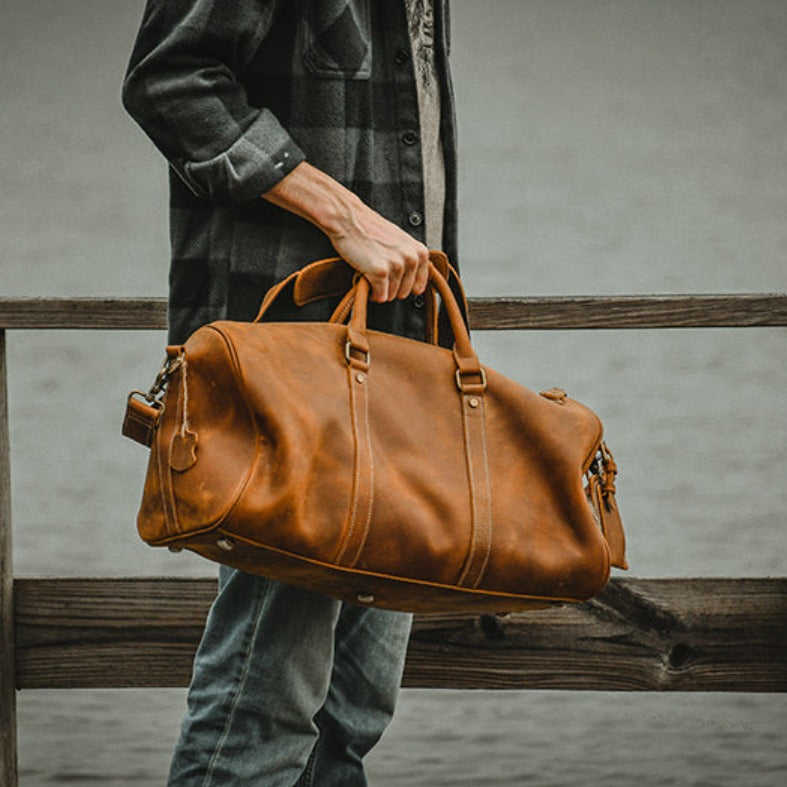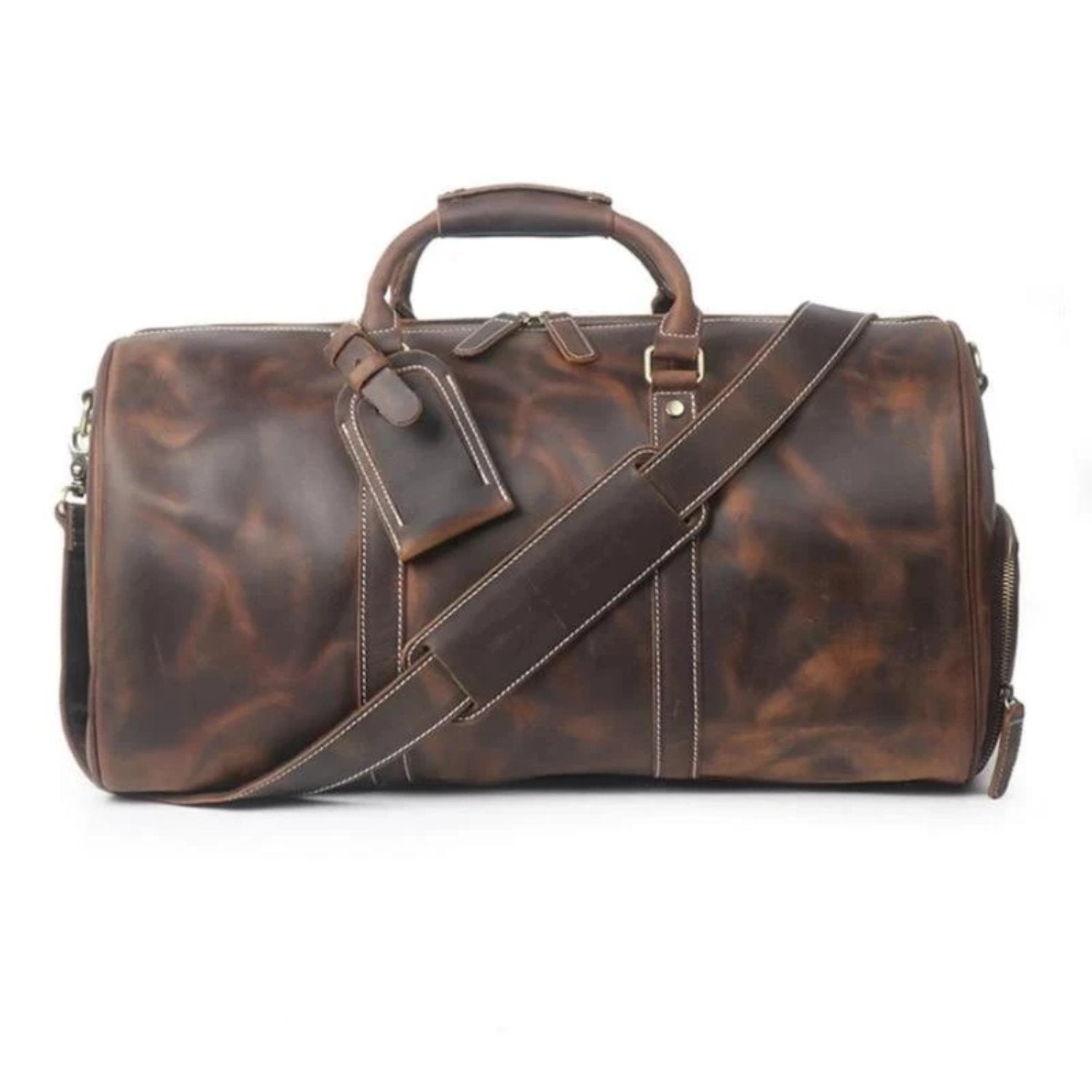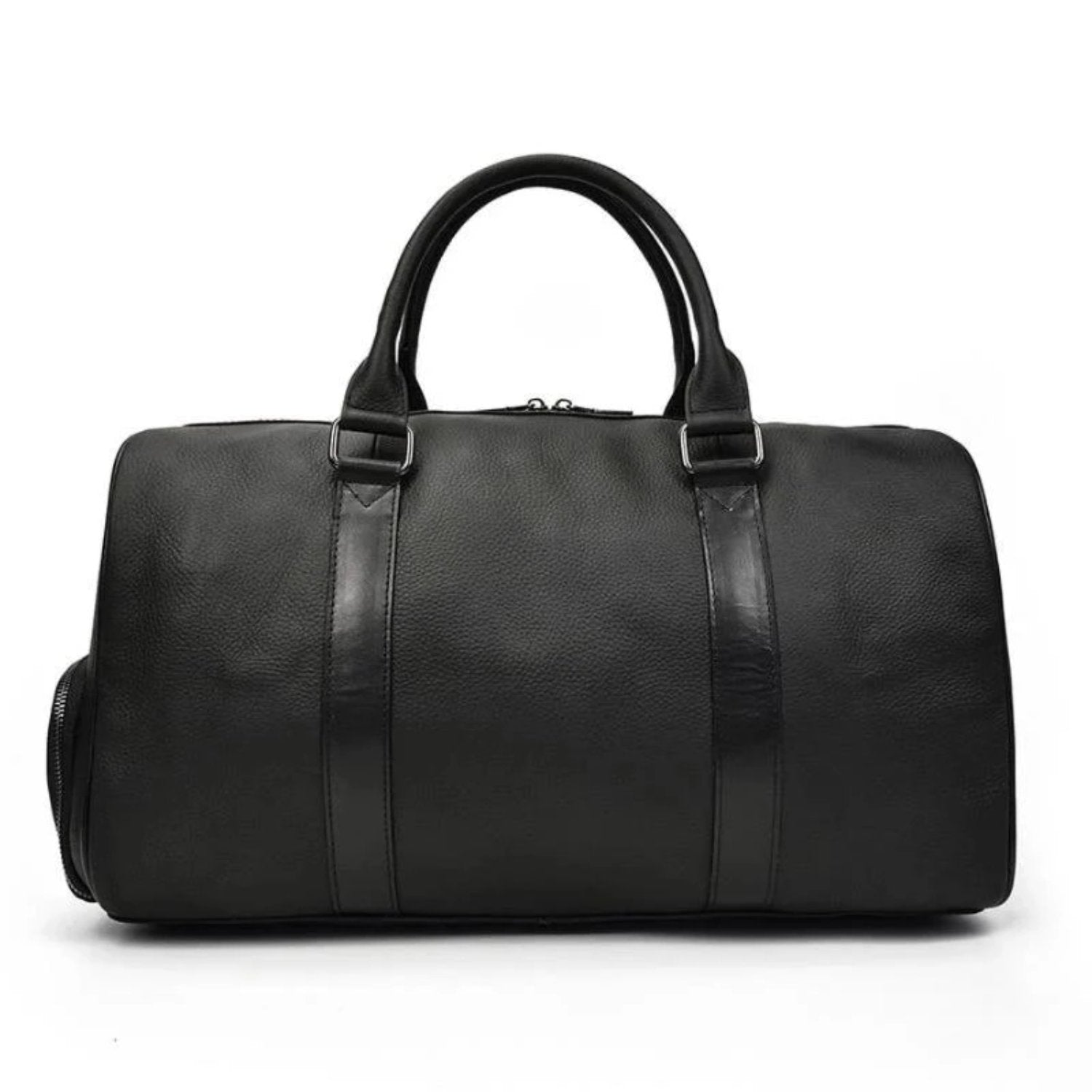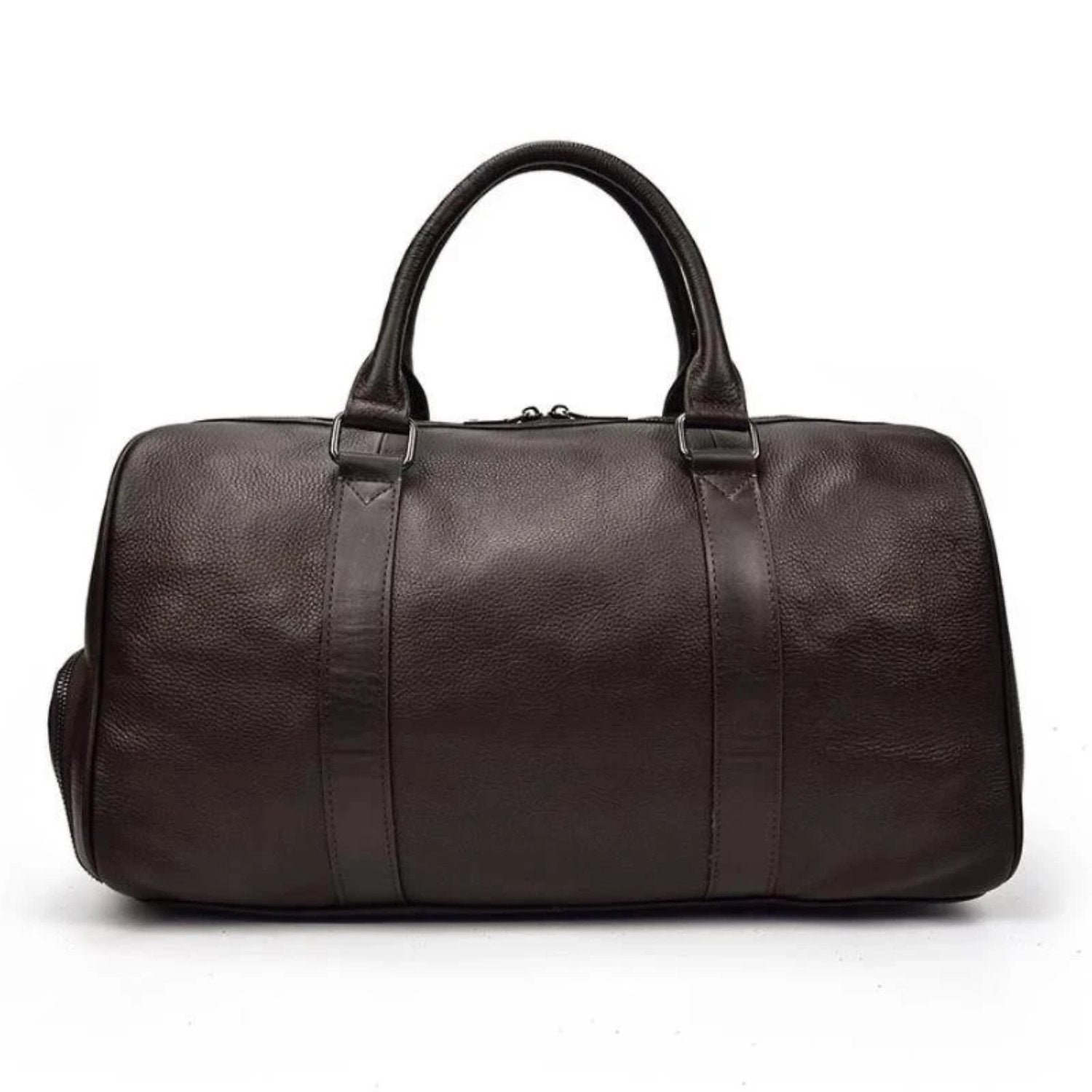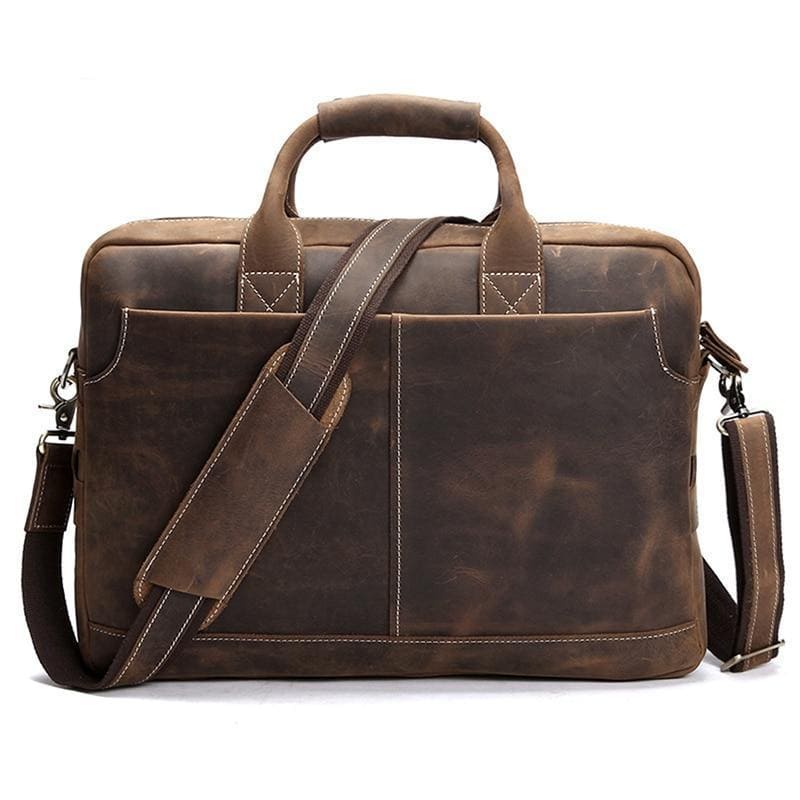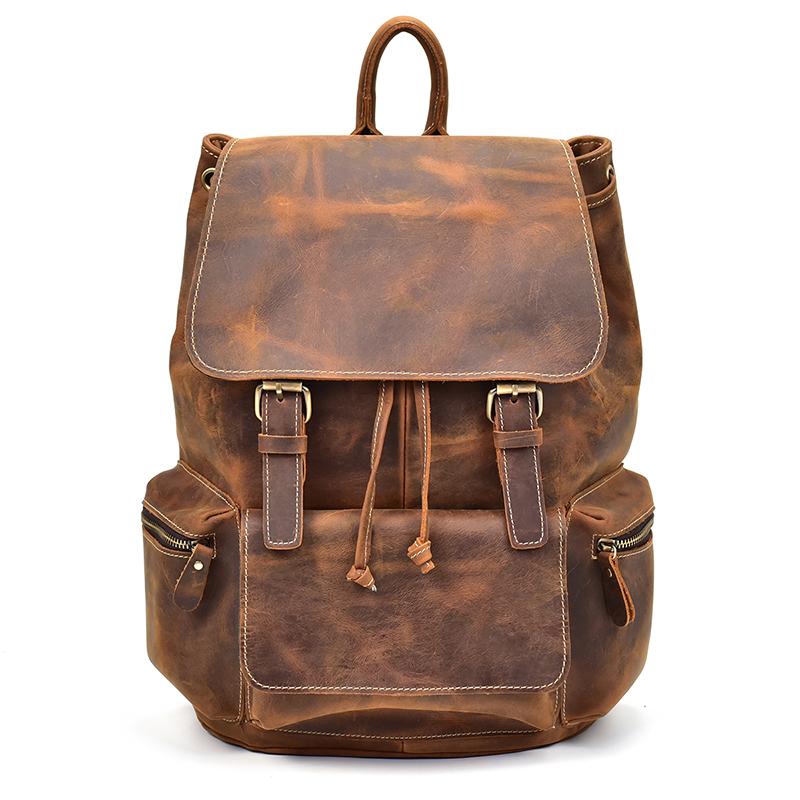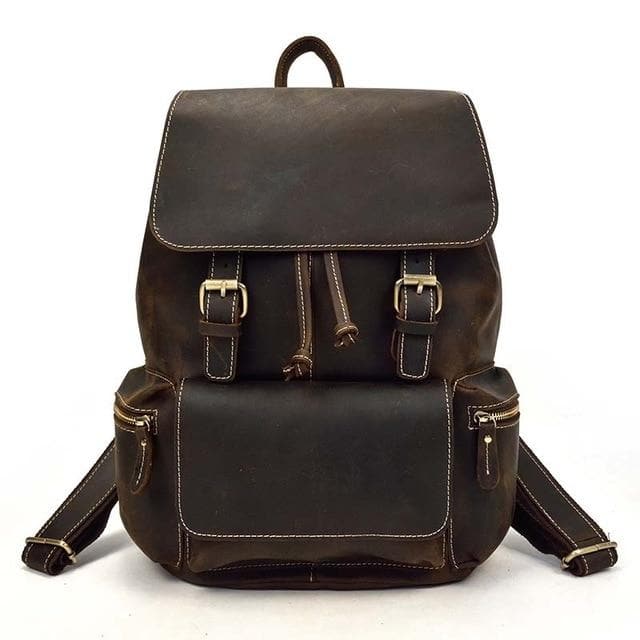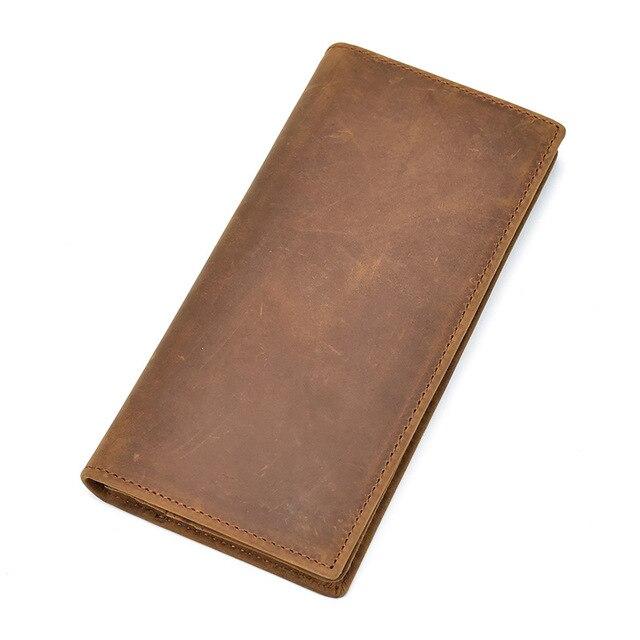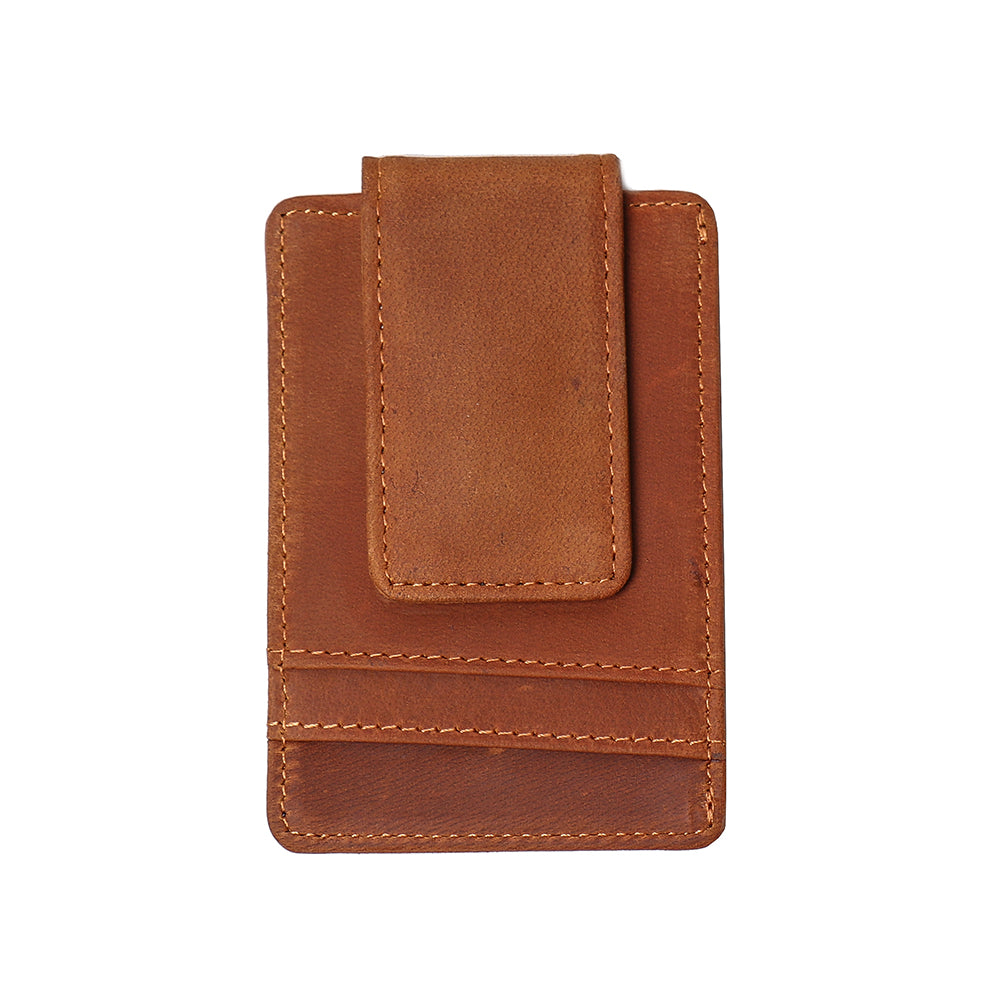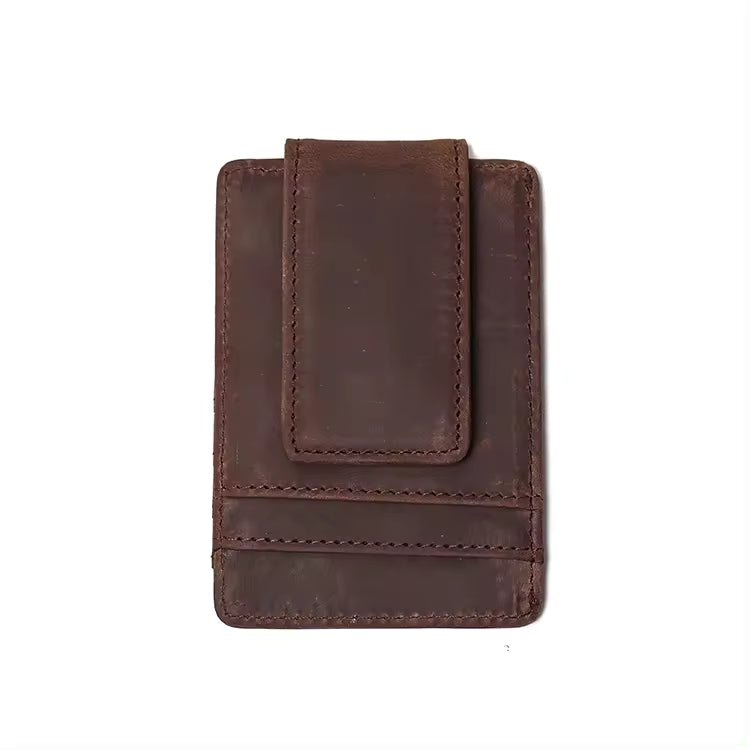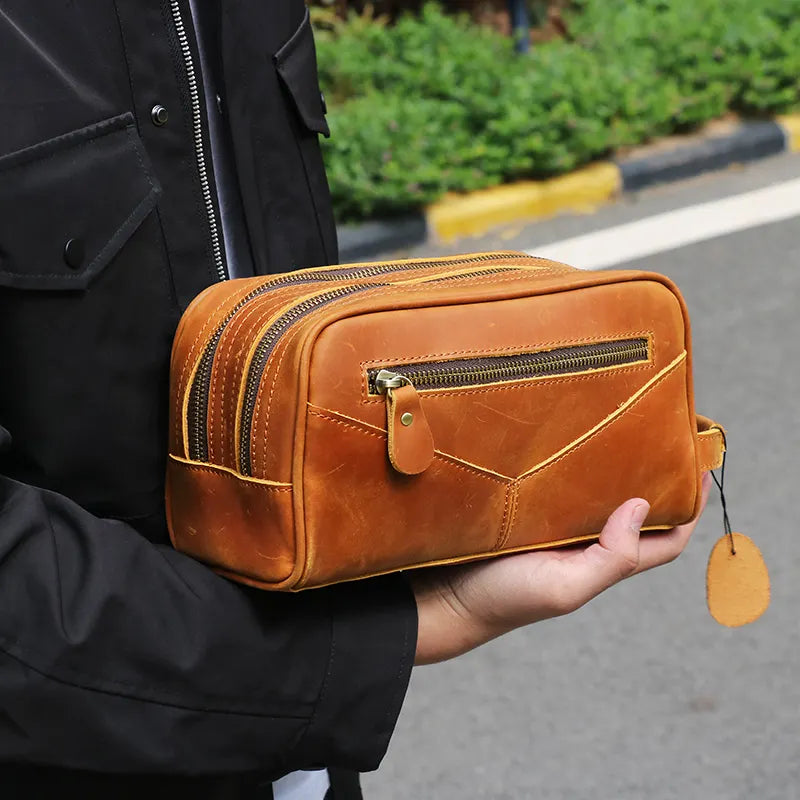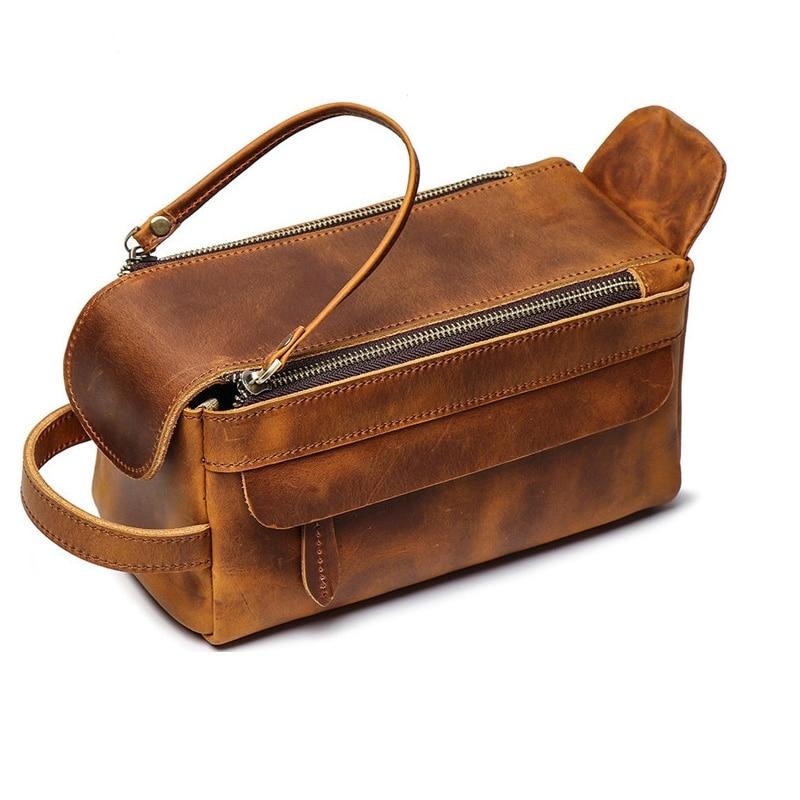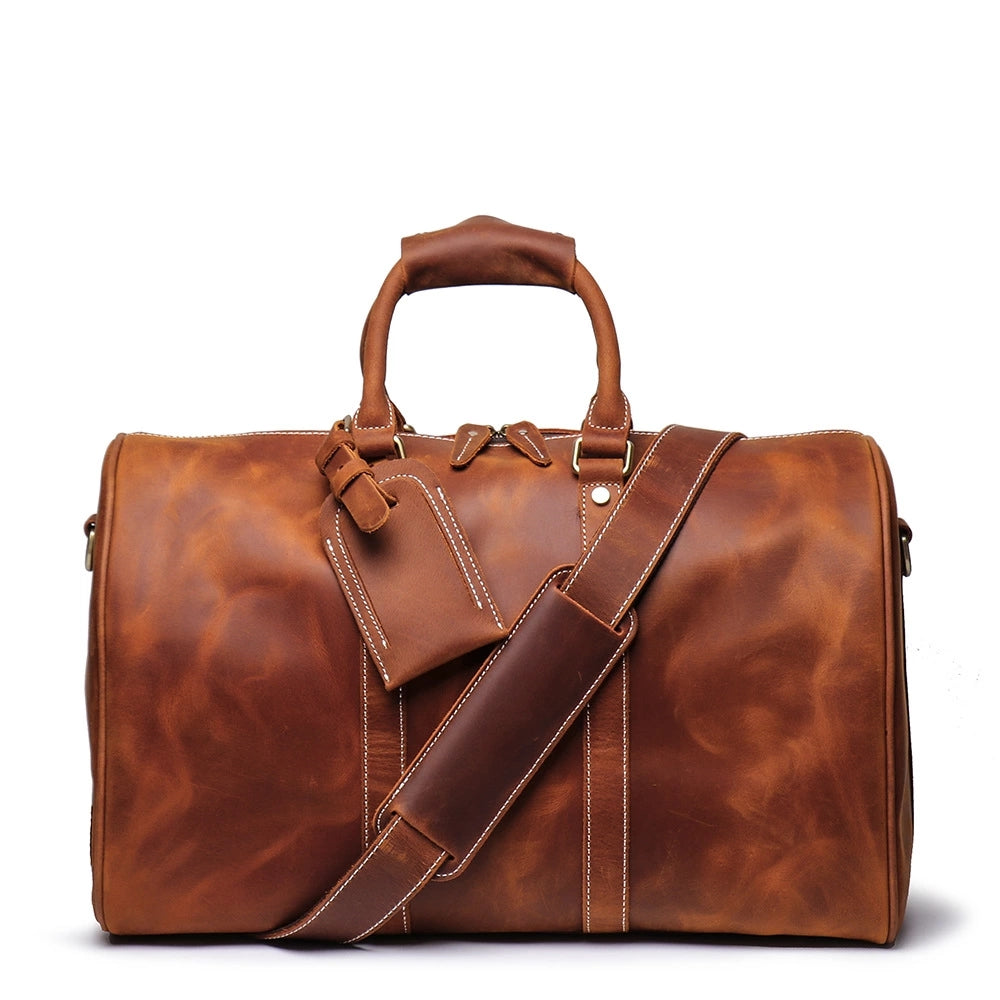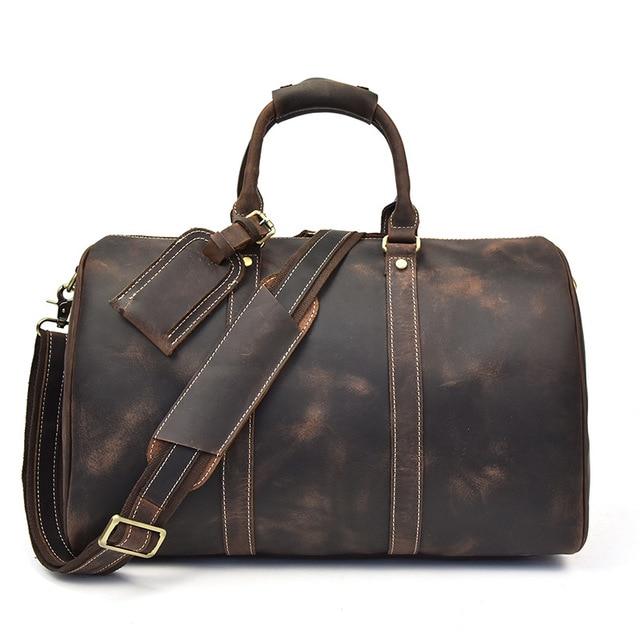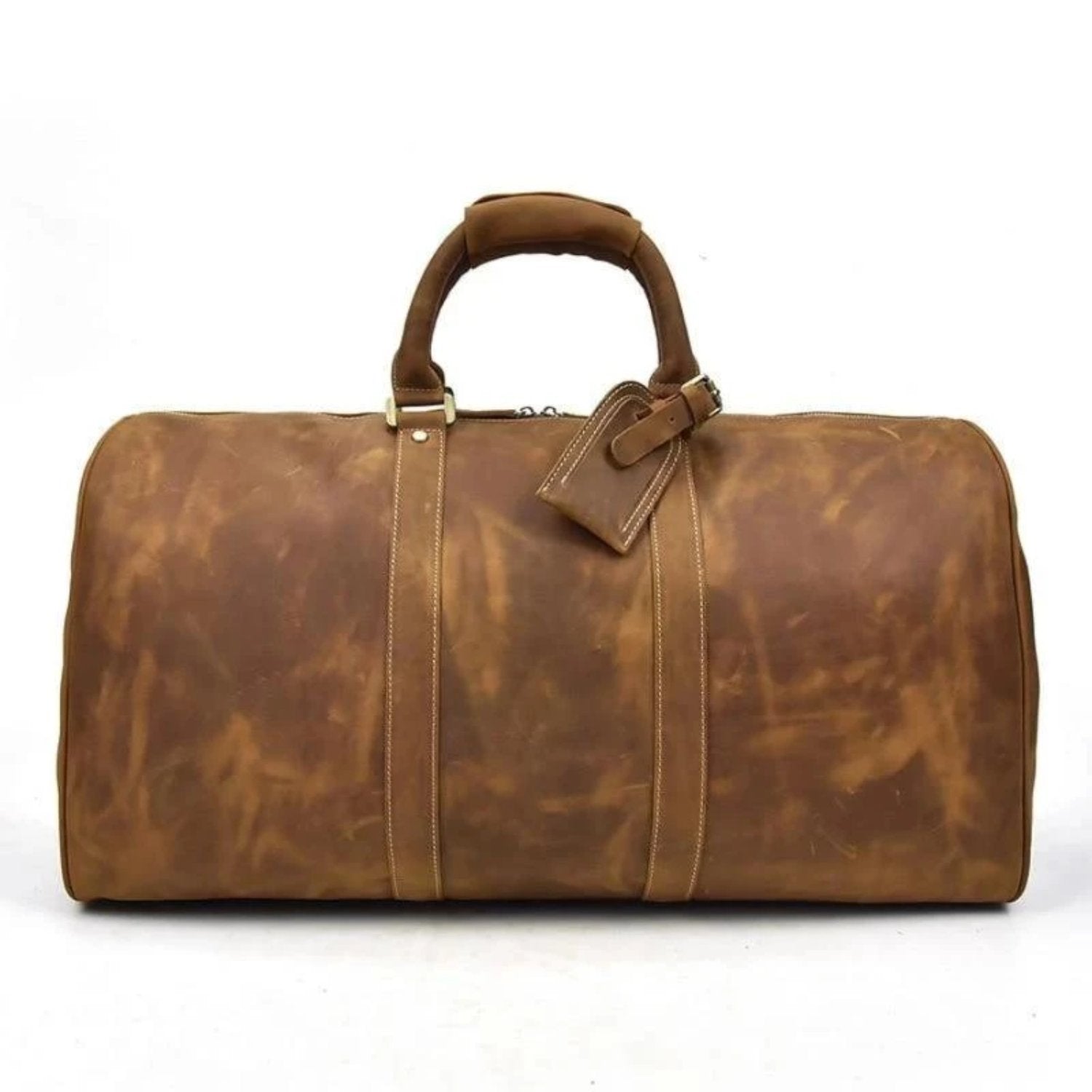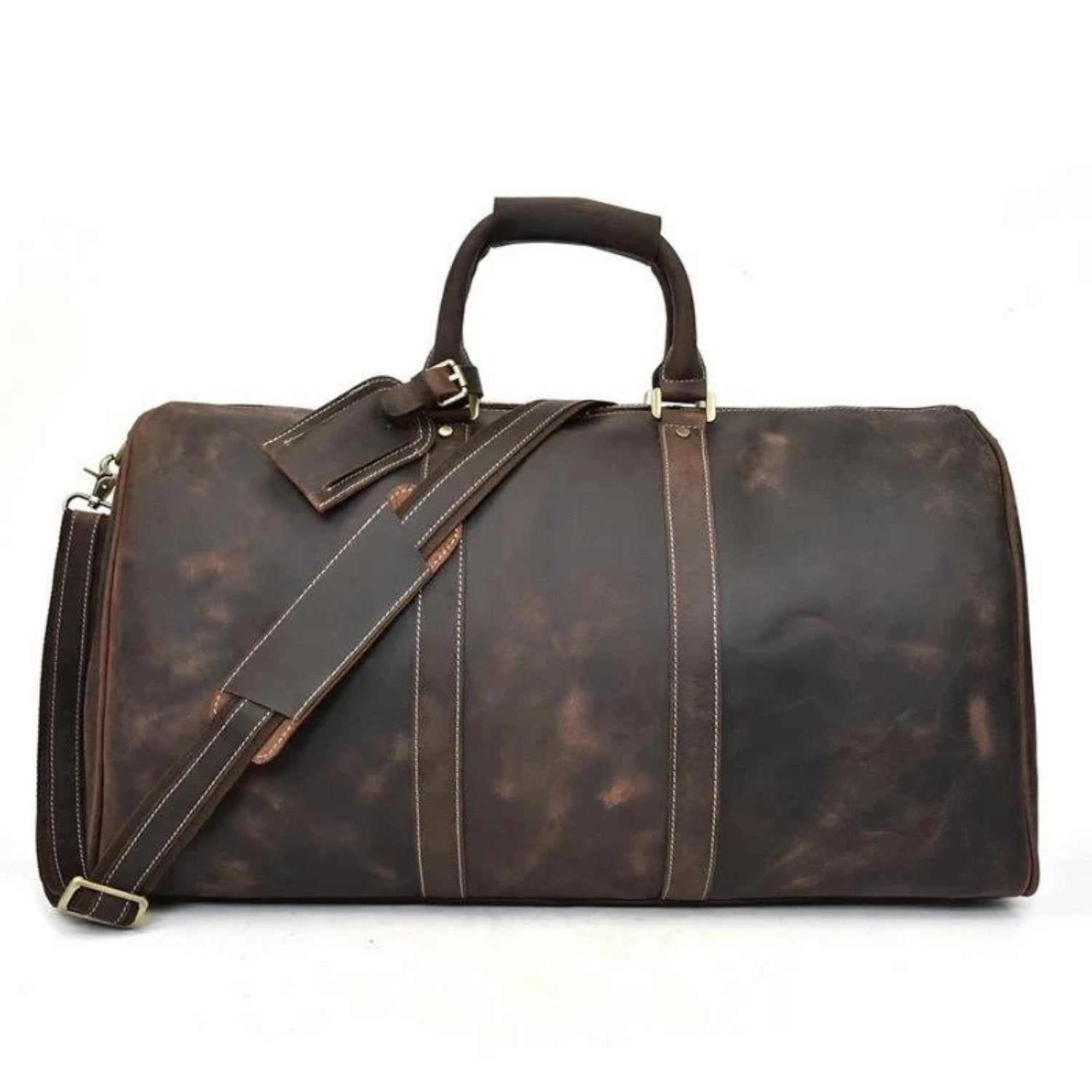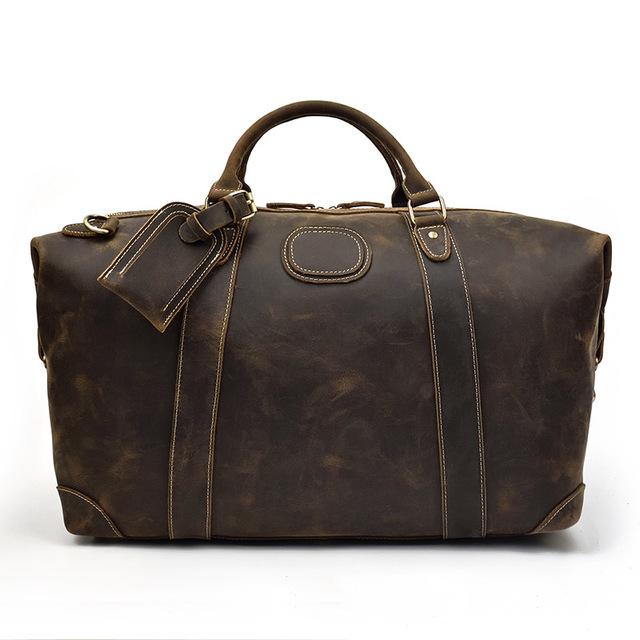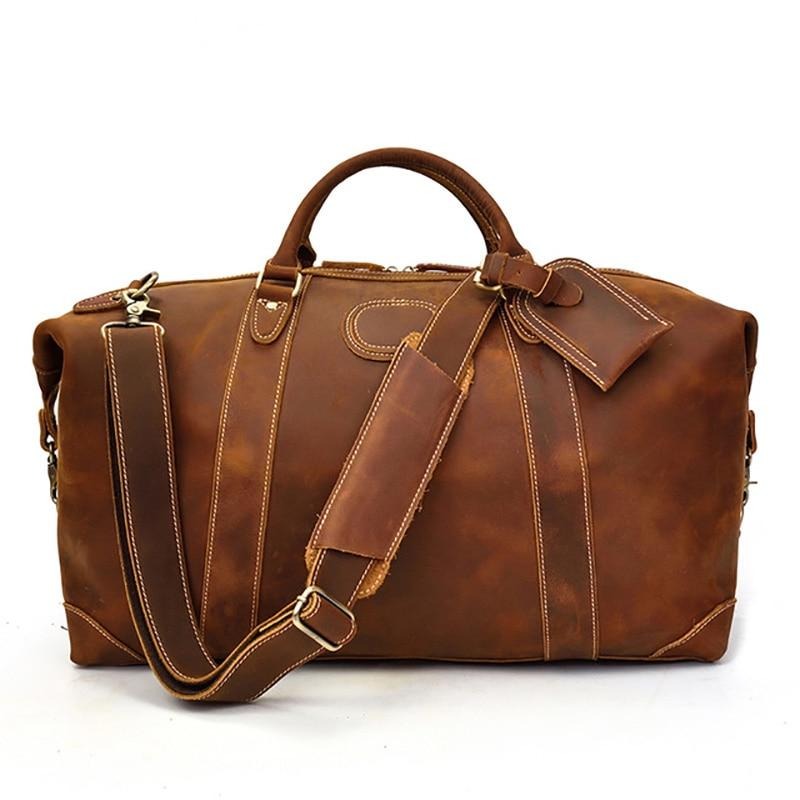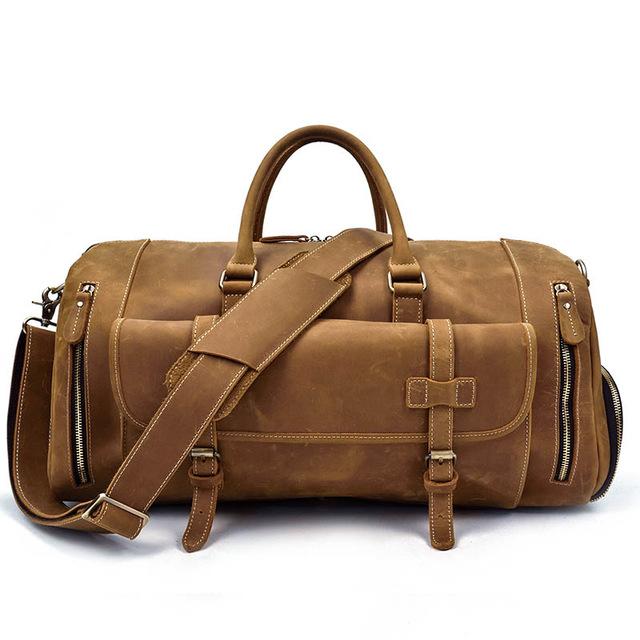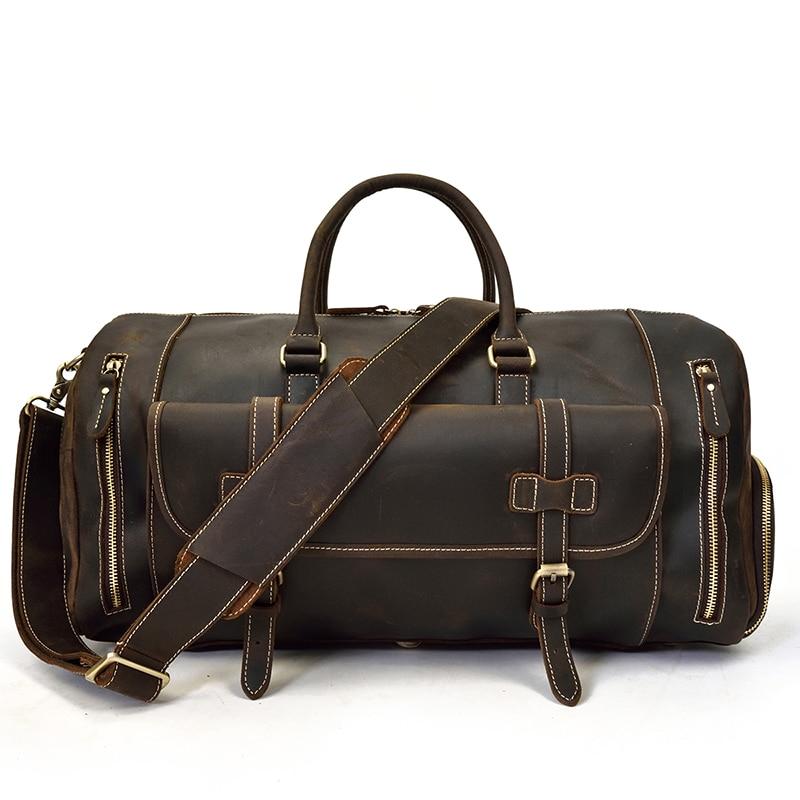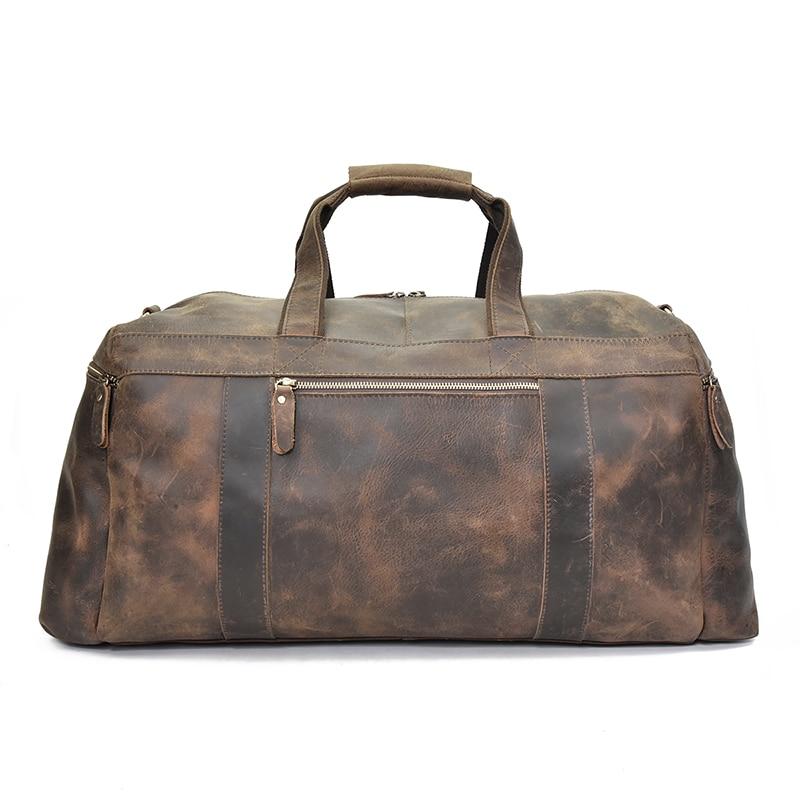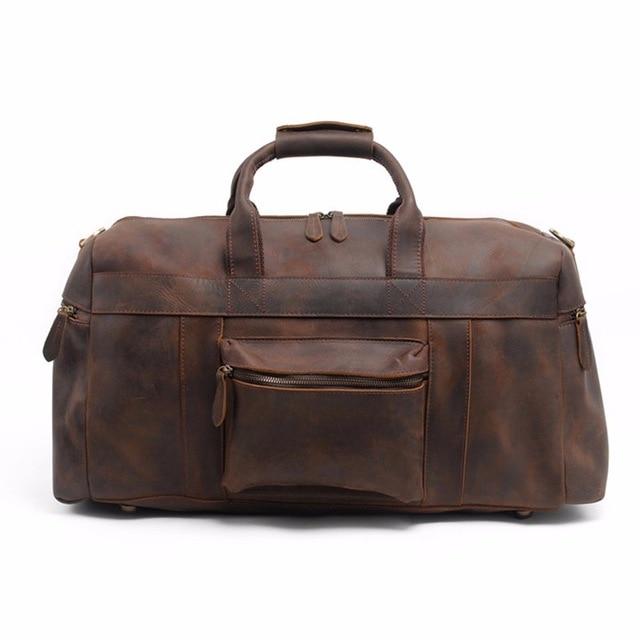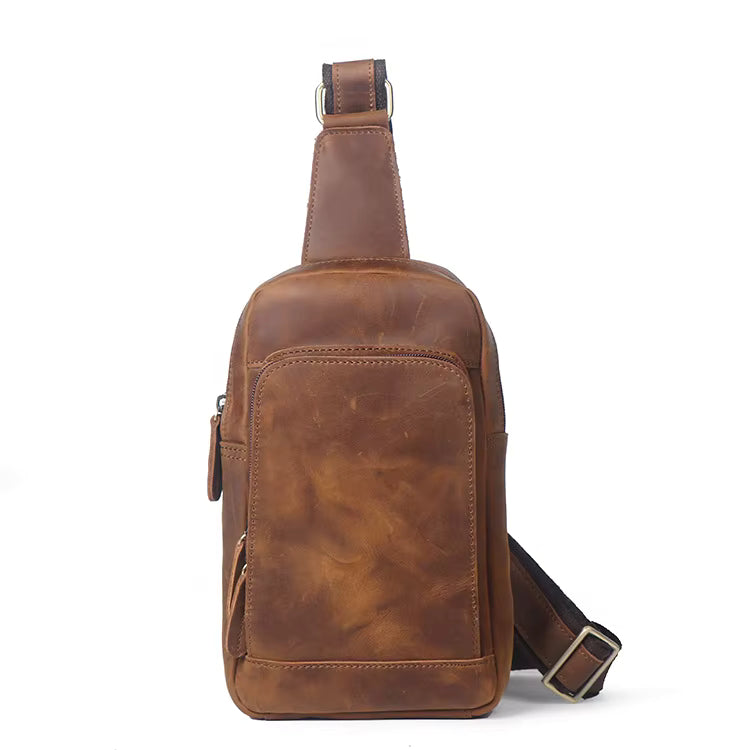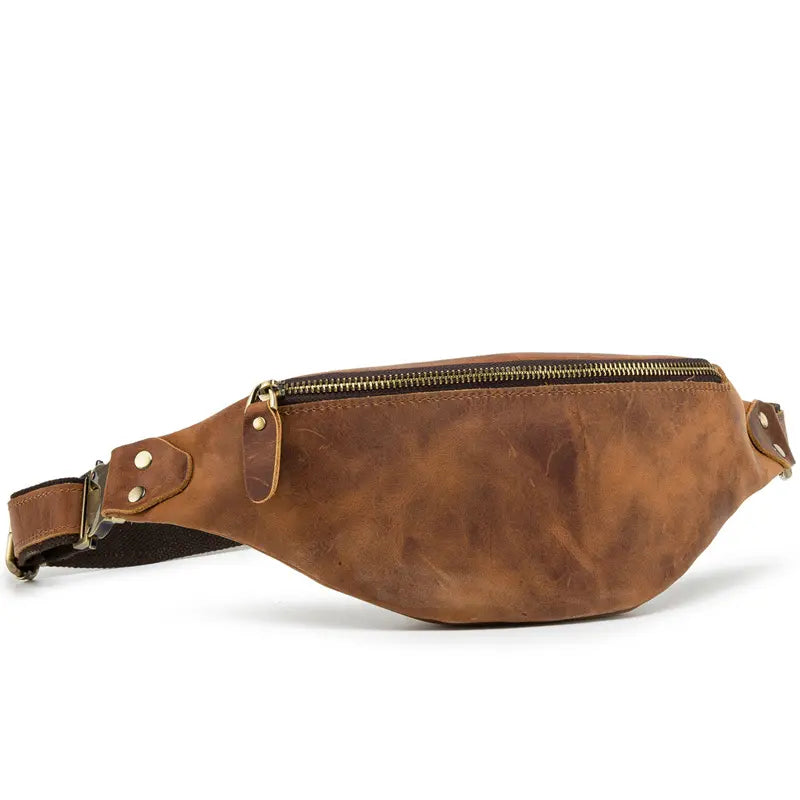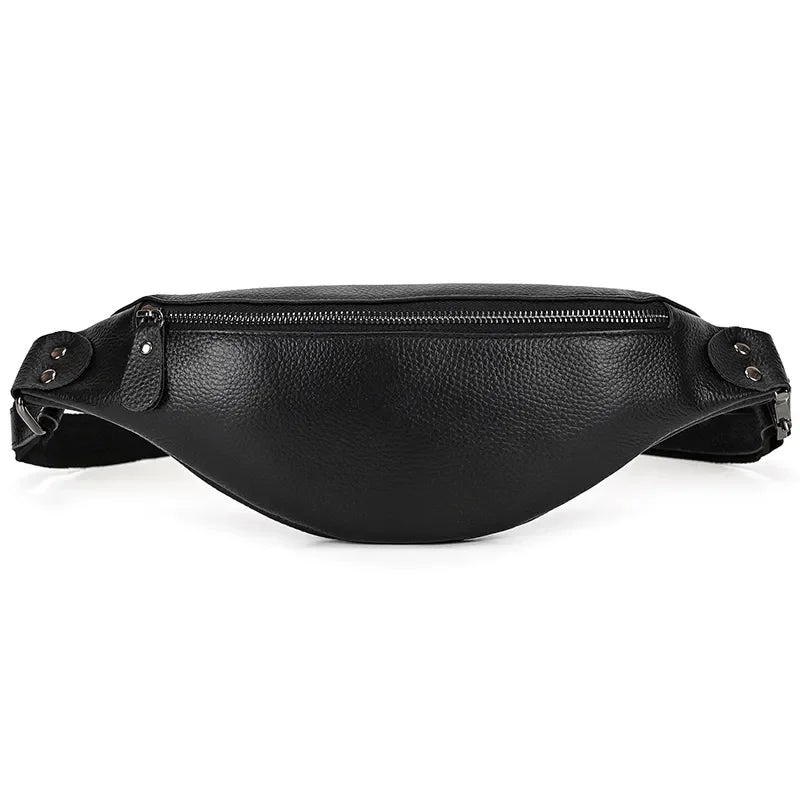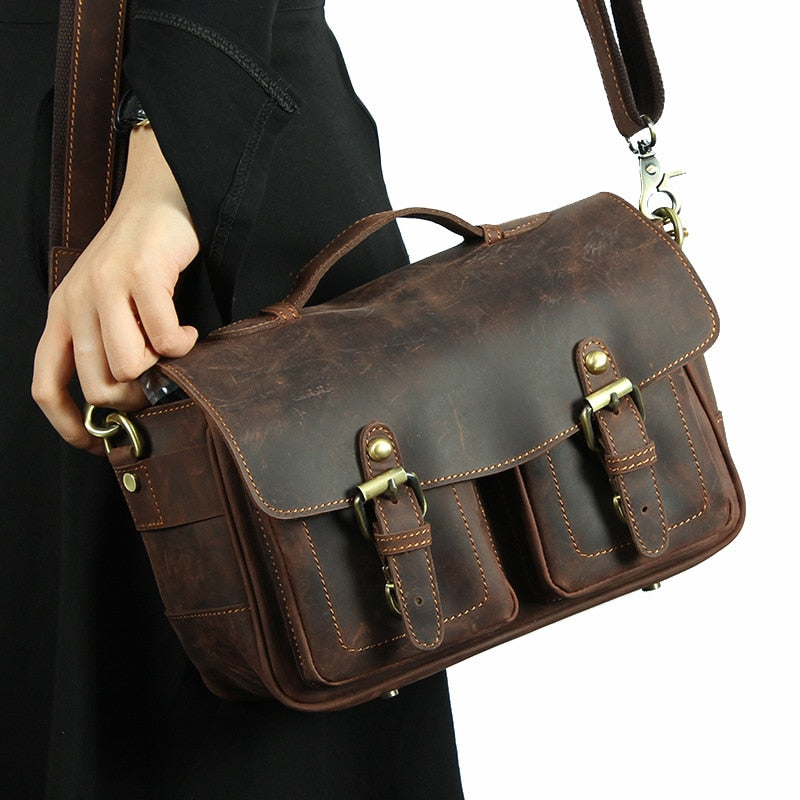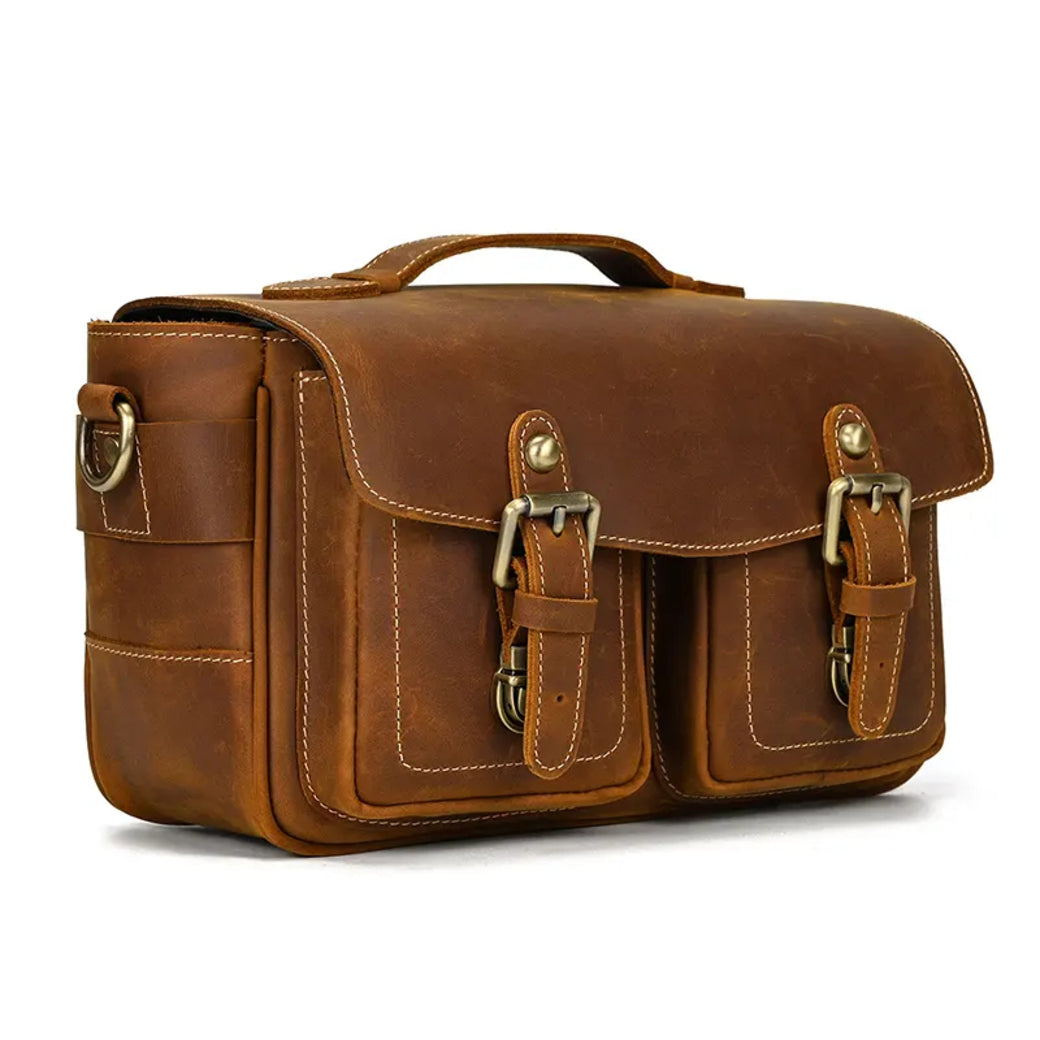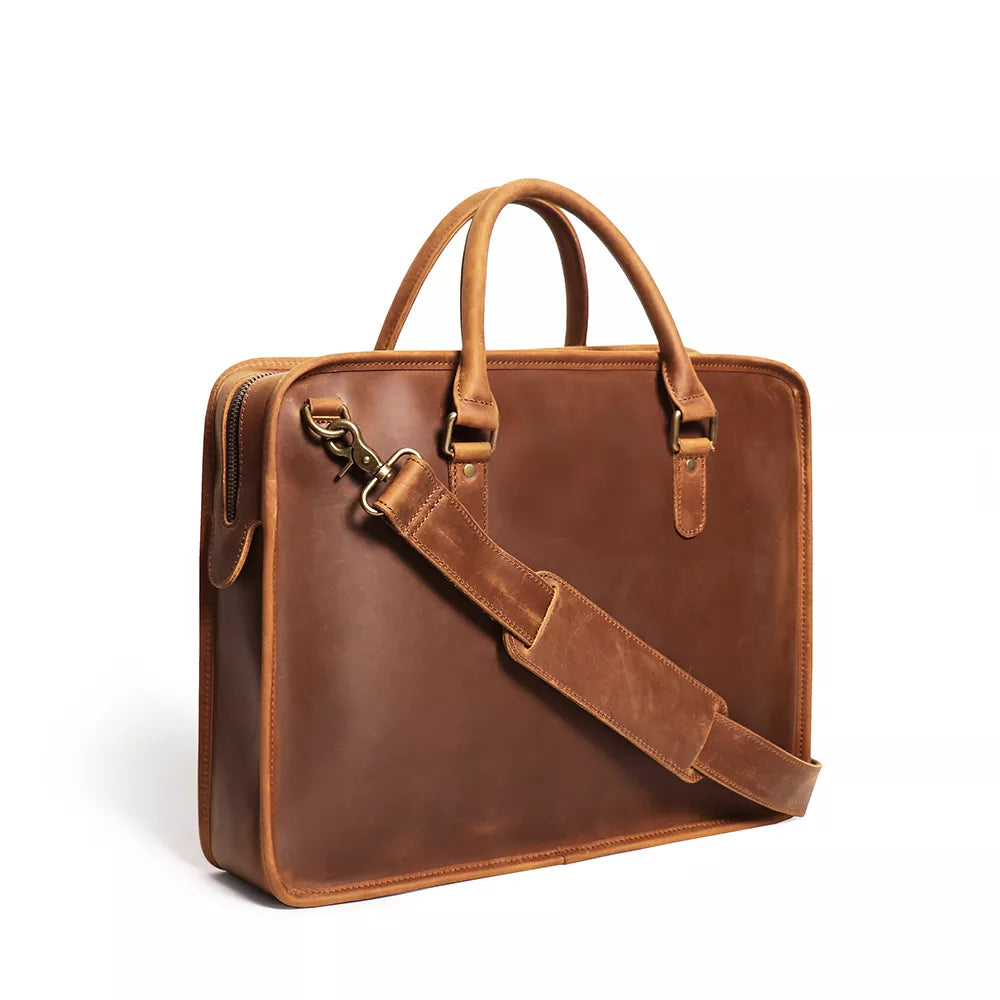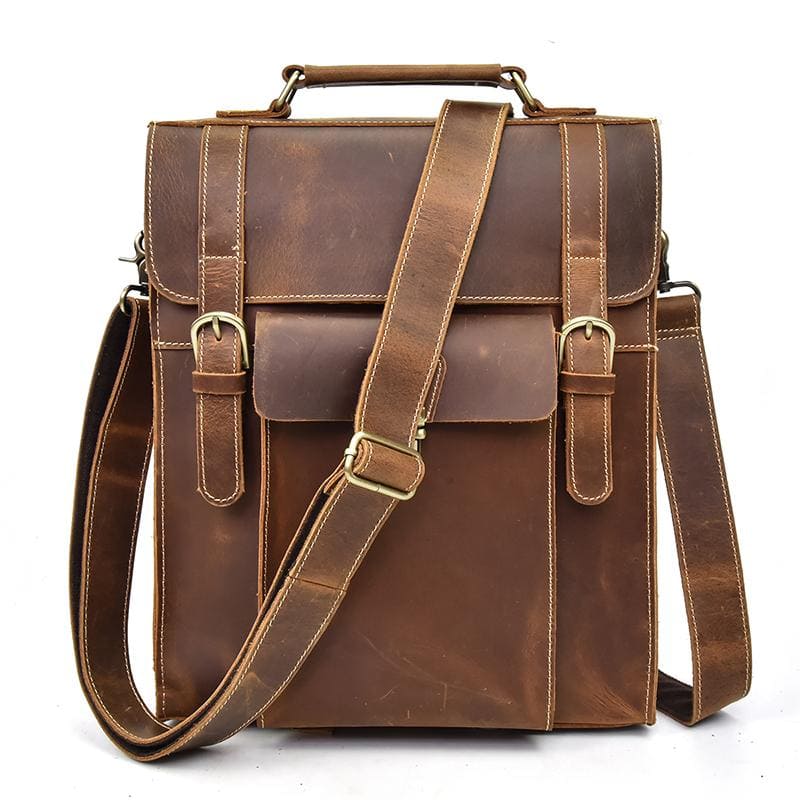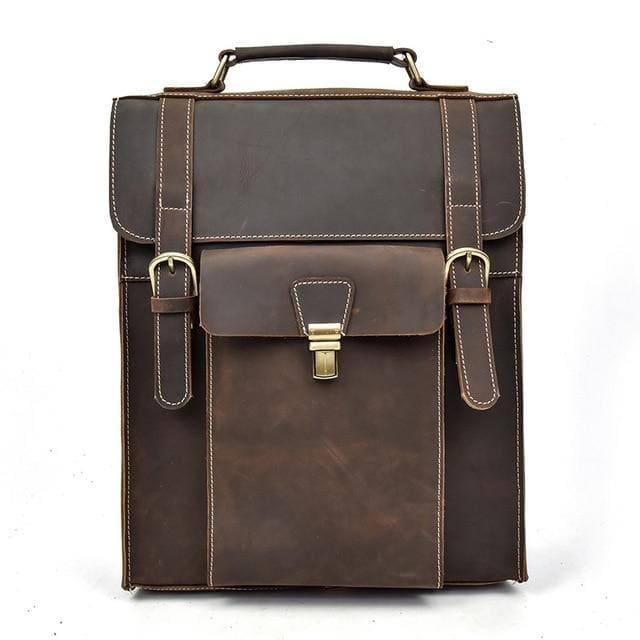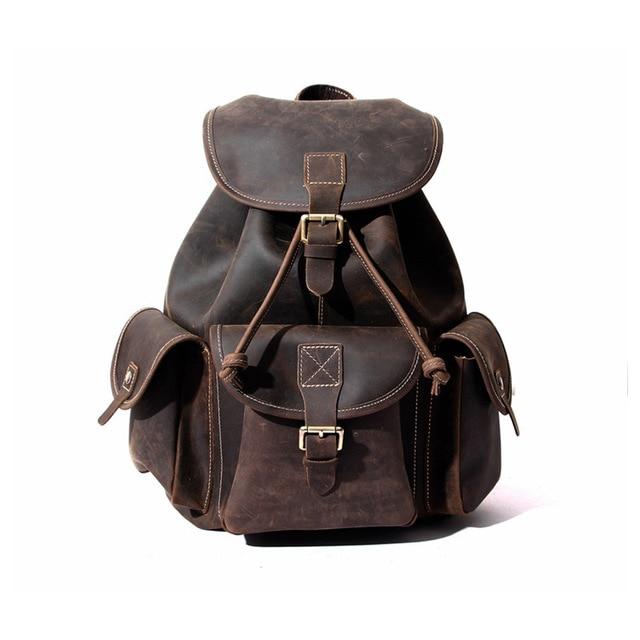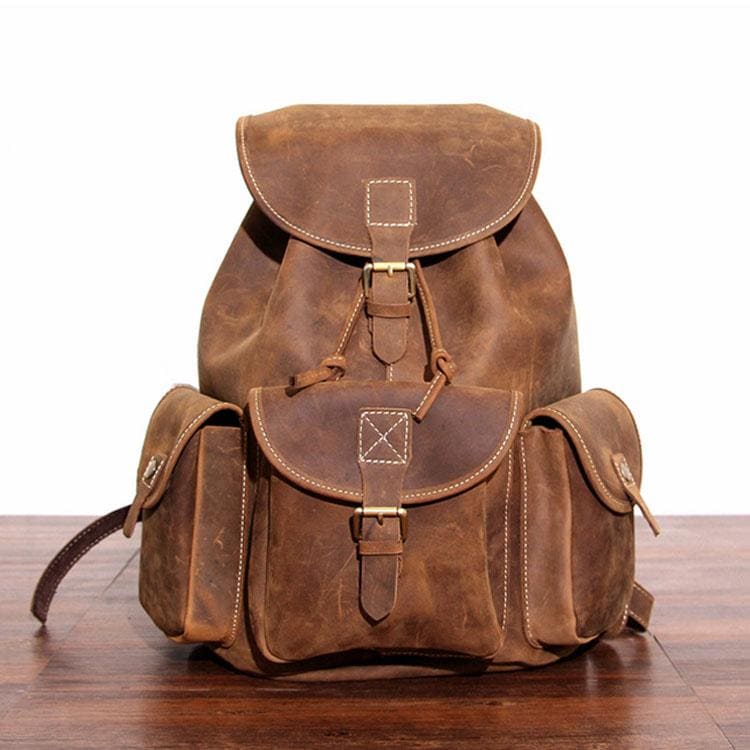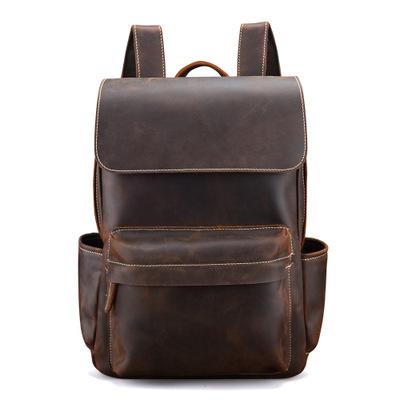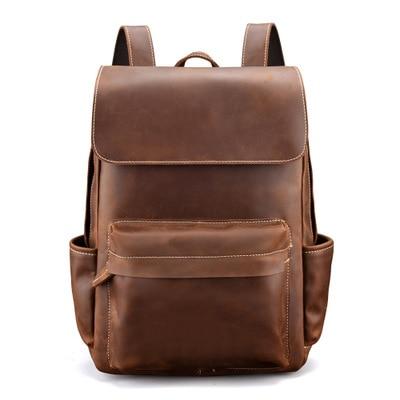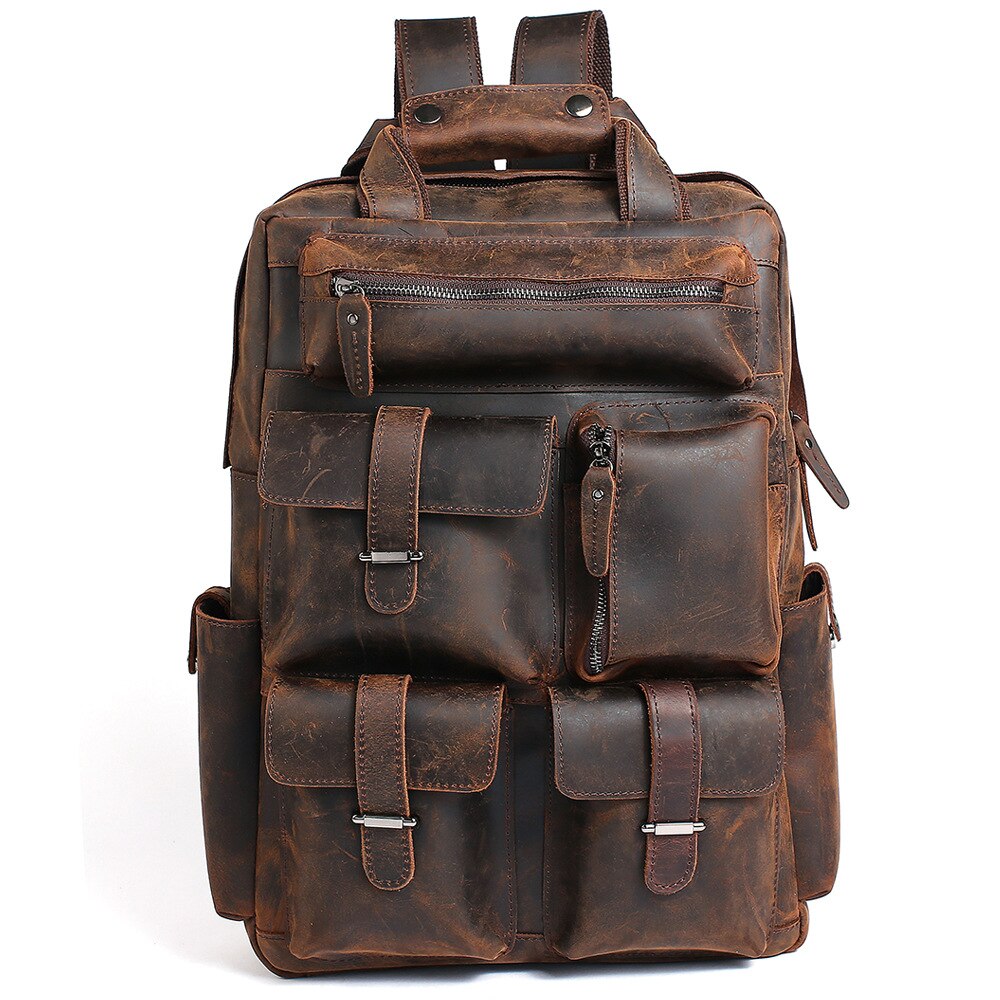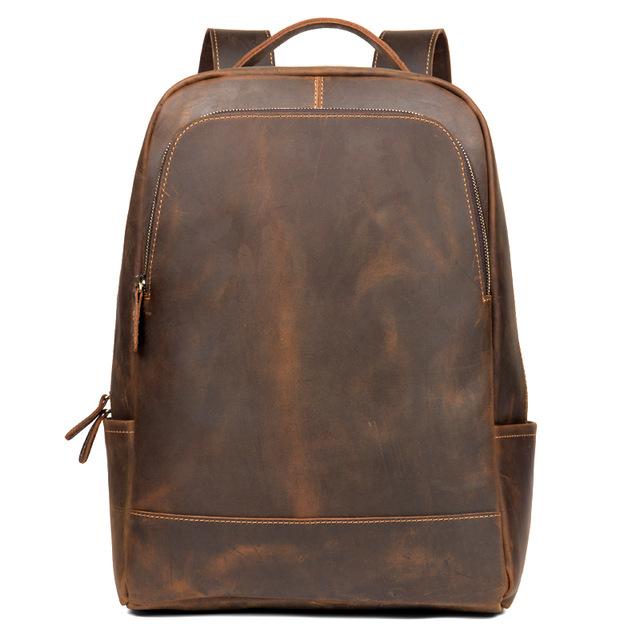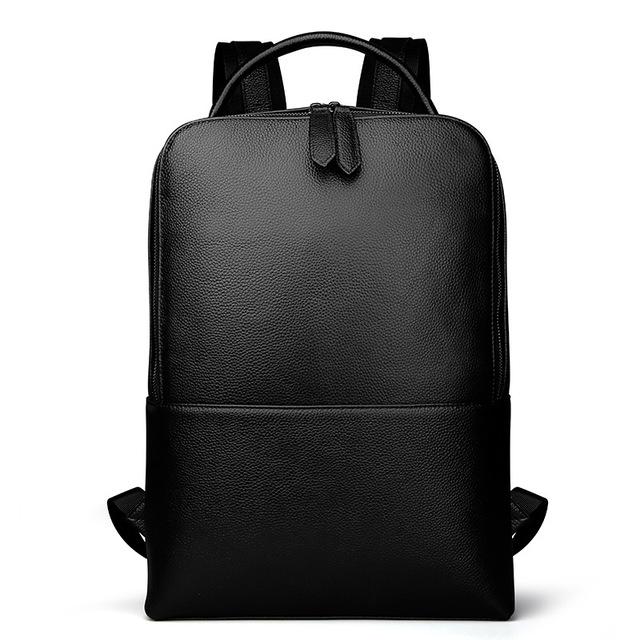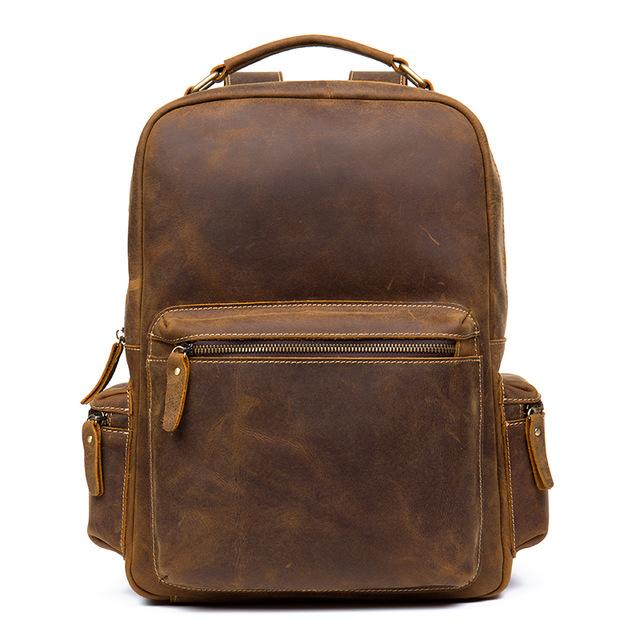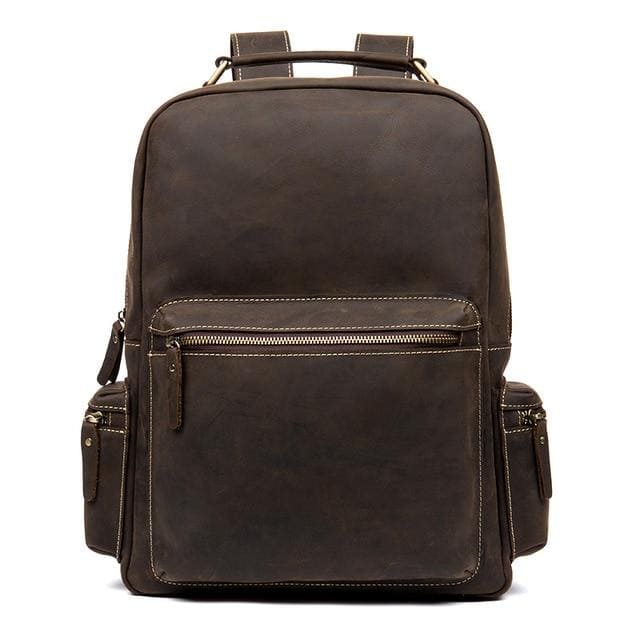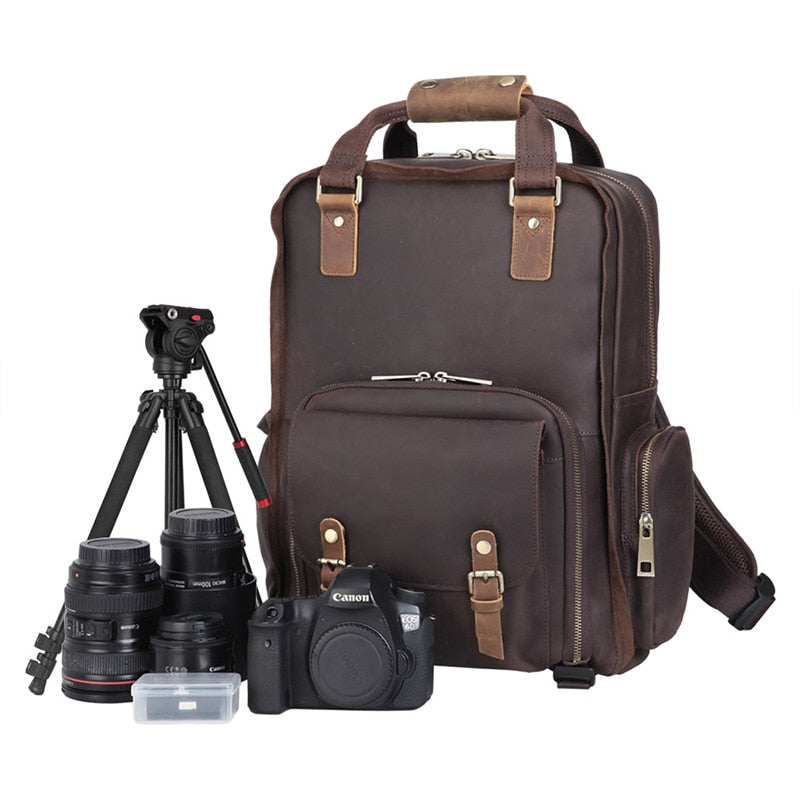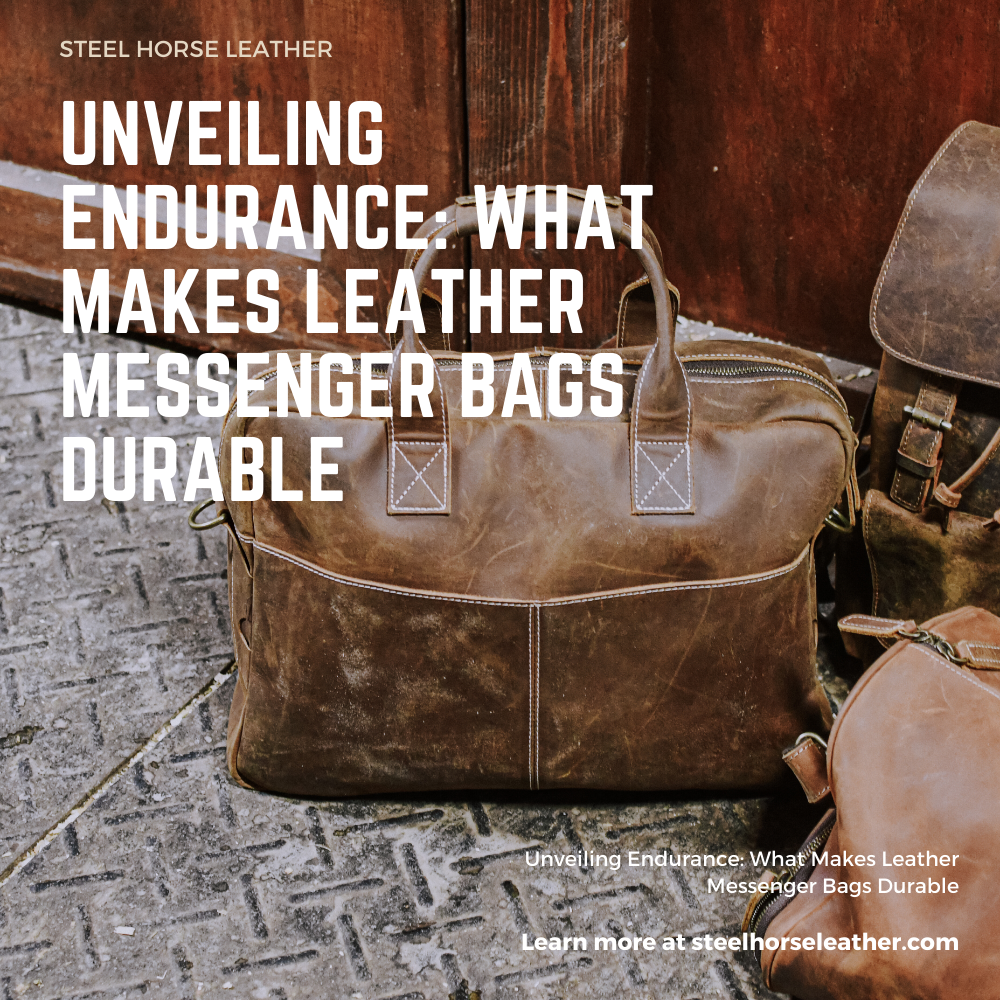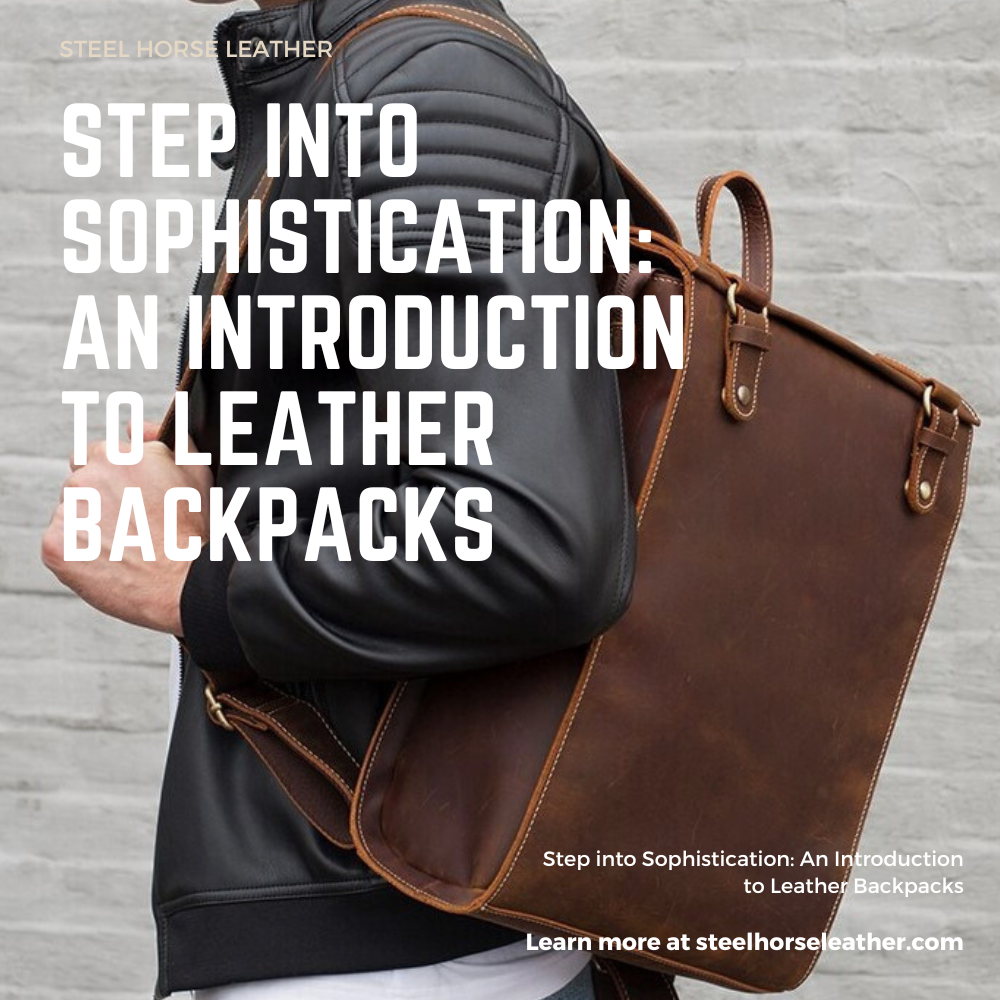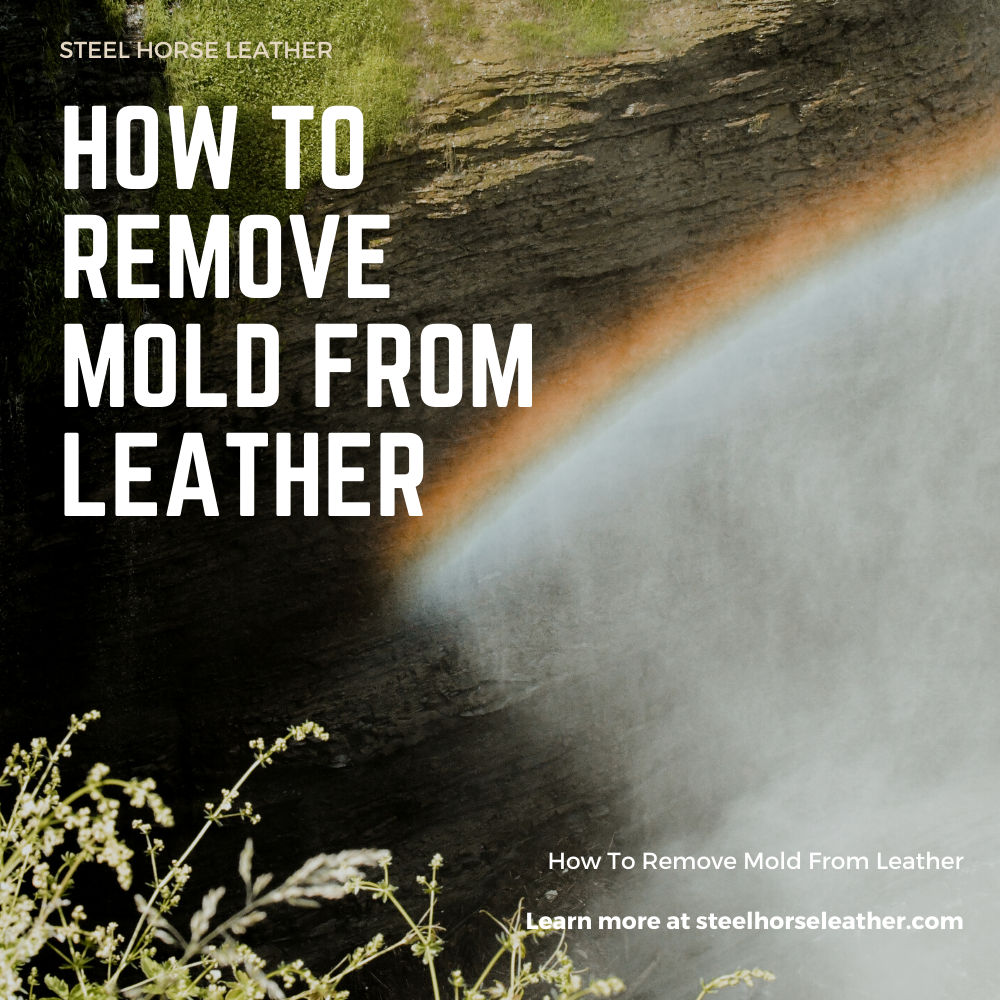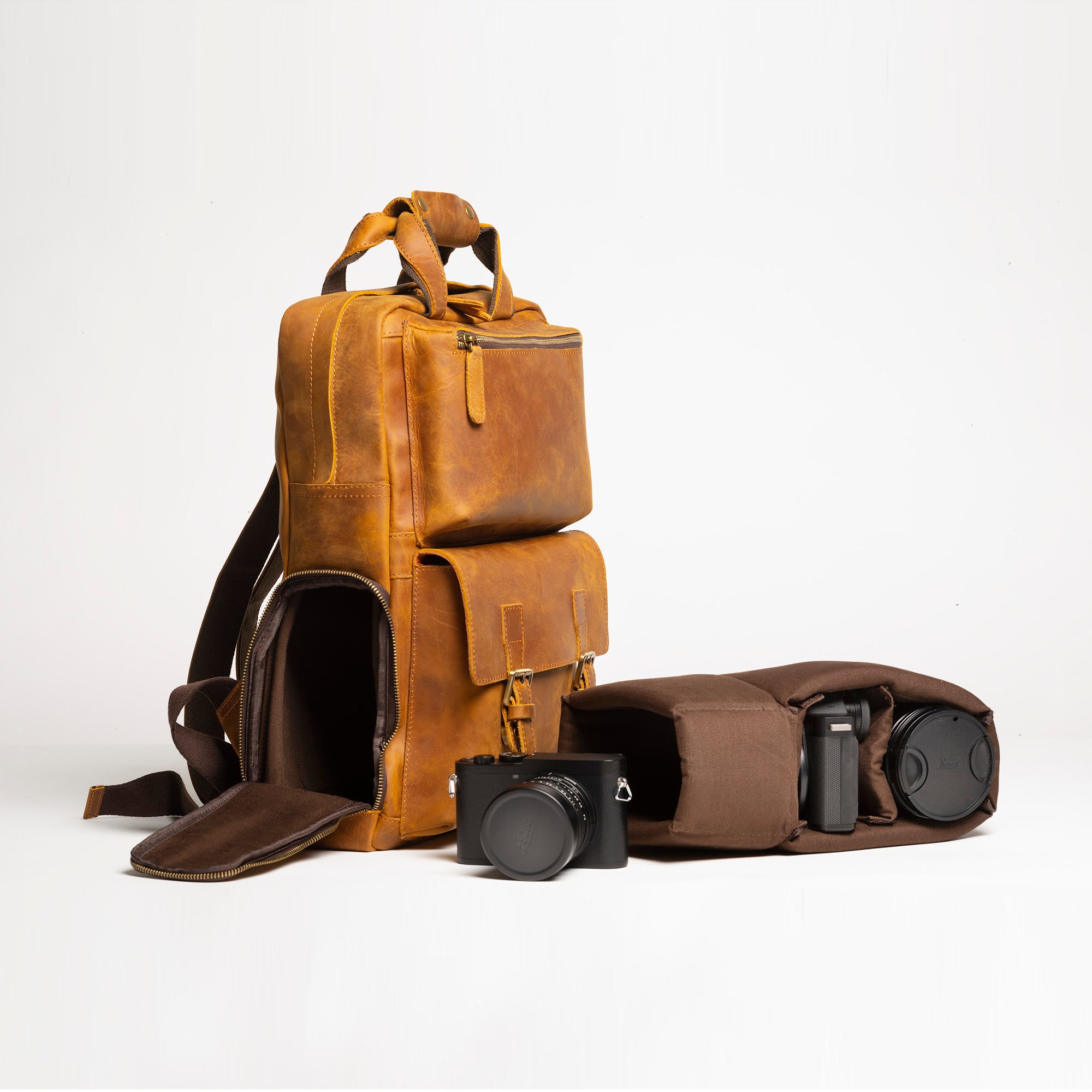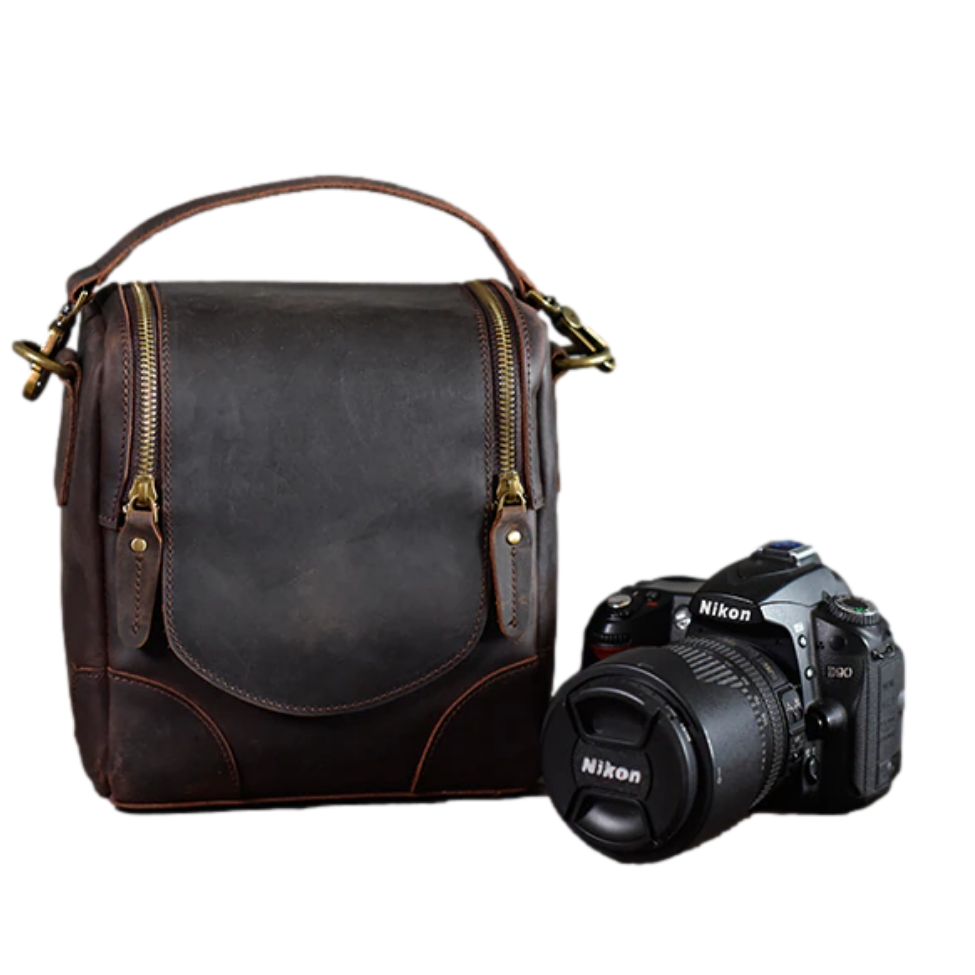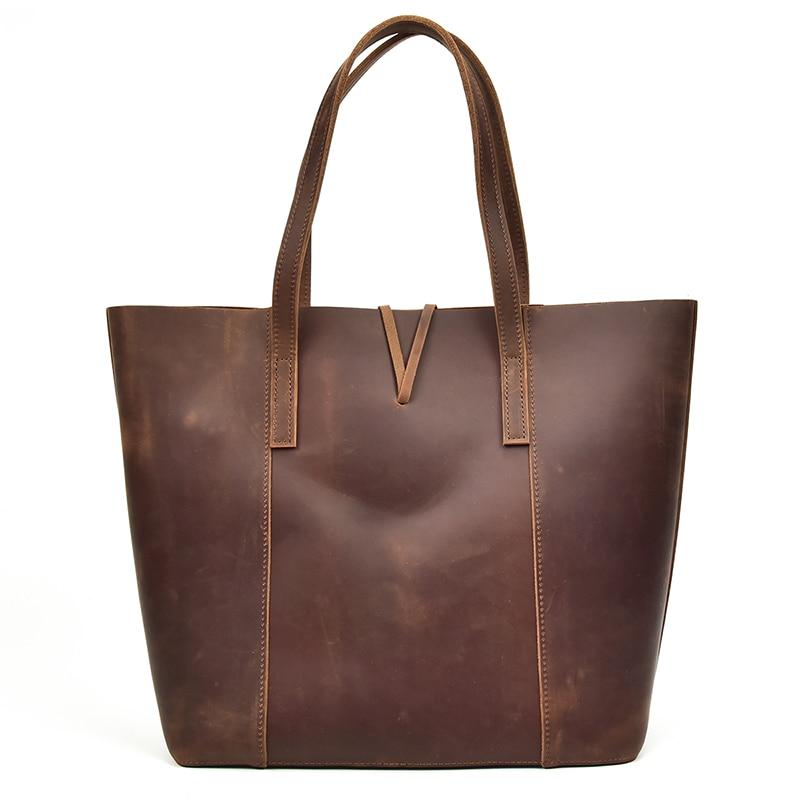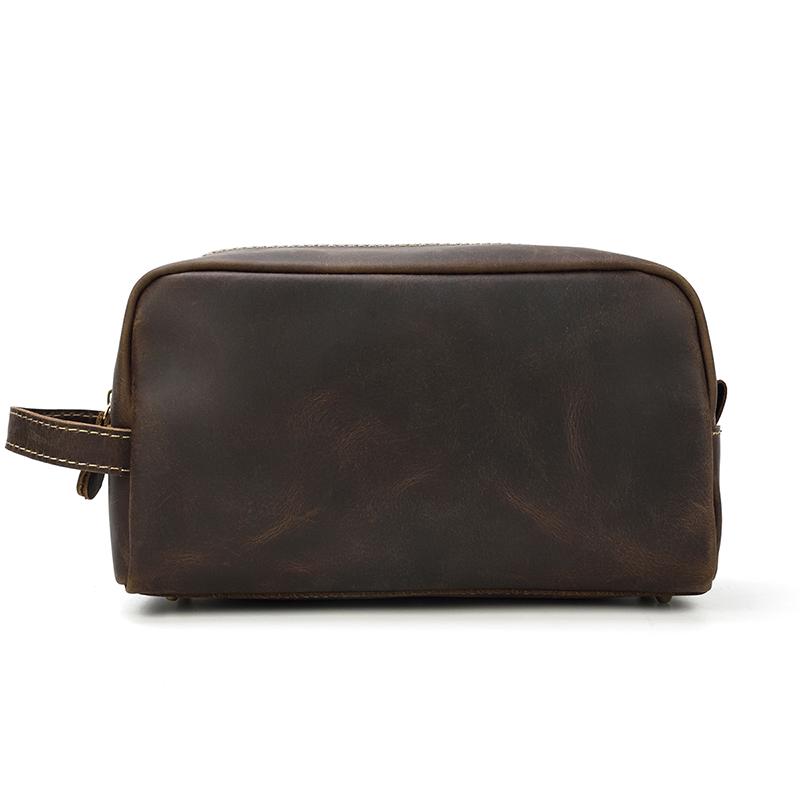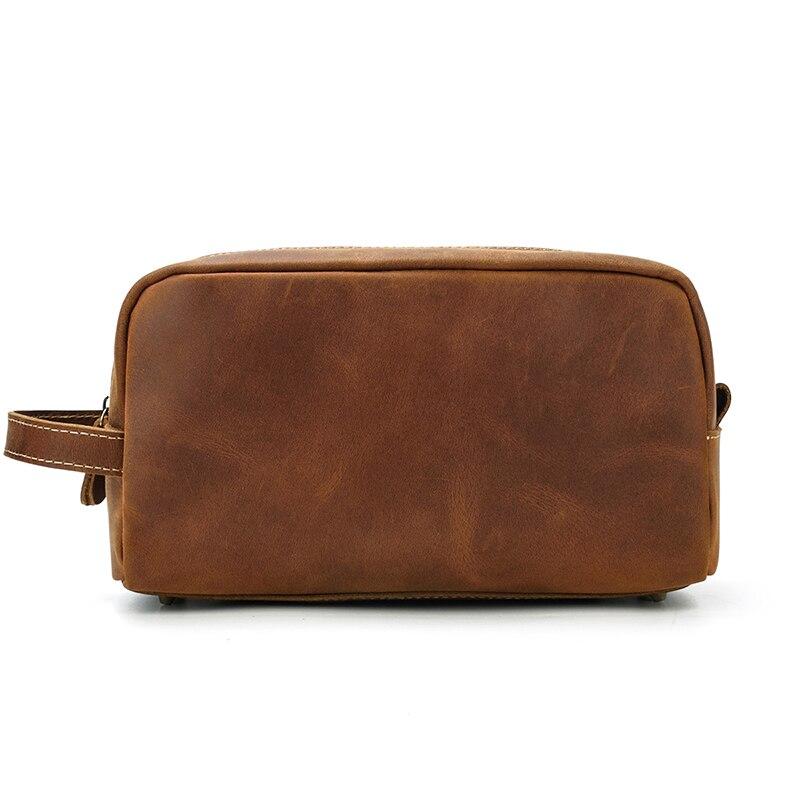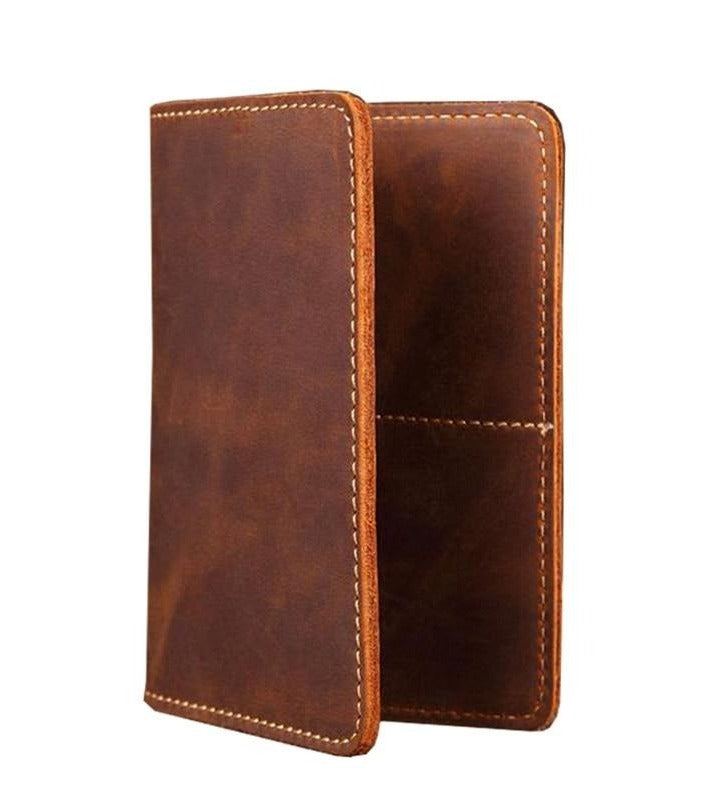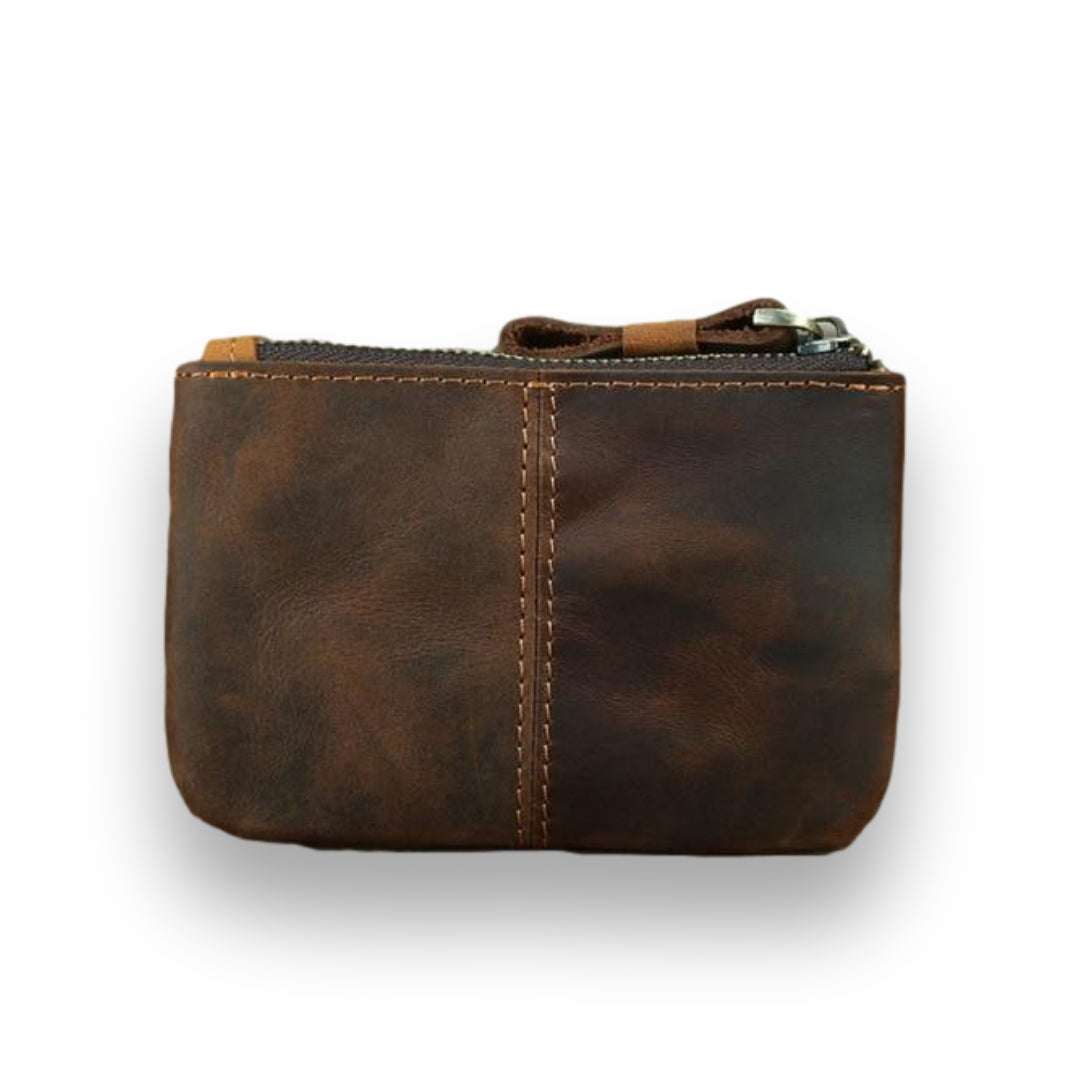It's a Monday, and you hurriedly get ready for work! You put on your shoes, hurriedly grabbed your leather bag, and other belongings. You are halfway to your office, when suddenly… it rained! Then you ask yourself, "Can leather get wet?" Well, of course, YES and you won't like it when you let the water stay on it for too long without doing anything about it!
Leather is a material that could easily be permeated by water. Leather contains oils that make the material durable and flexible. When leather absorbs water, the oils muddle with the water molecules. Is this a bad thing? YES. This is because as the material dries, the oils evaporate with the water molecules. Consequently, leather loses its natural oils, become brittle, and possibly cause irreparable damage. You don't want that to happen, right? Well, don't worry! Our leather experts here at Steel Horse Leather will help you.
Key Takeaways
-
Leather contains natural oils that can be compromised when exposed to water, leading to potential brittleness and damage if not properly treated
-
Different types of leather (water-based vs. oil-based) require different approaches to water damage treatment
-
Natural drying is crucial - never use artificial heat sources like blow dryers to dry wet leather
-
Regular conditioning and preventive treatments can help make leather more water-resistant
-
Proper immediate response to water exposure can prevent long-term damage to leather items
Why Trust Our Leather Care Expertise?
At Steel Horse Leather, our dedication to leather craftsmanship spans generations of artisanal expertise. Our master craftsmen don't just create leather products; they live and breathe the art of leather care and maintenance. With decades of combined experience in working with various types of leather, from vegetable-tanned to oil-based varieties, we've developed an intimate understanding of leather's behavior under different conditions and how to preserve its natural beauty.
Our expertise isn't just theoretical – it's built on hands-on experience with premium leather processing and manufacturing. We work directly with carefully vetted tanneries and leather suppliers, giving us comprehensive knowledge of leather properties from source to finished product. This deep understanding of leather's composition and characteristics allows us to provide authoritative advice on leather care and maintenance. When we recommend specific treatment methods for wet leather, it comes from years of testing and practical application across thousands of leather products we've crafted and maintained.
The Science Behind Leather and Water Interaction
Leather's interaction with water is a fascinating blend of chemistry and material science, primarily influenced by its unique structure. At its core, leather consists of collagen, a protein that forms a complex network of fibers. This fibrous arrangement gives leather its strength and durability. However, this very structure also allows for some water absorption. When leather gets wet, the water molecules infiltrate the voids between the fibers, disrupting the natural oils that lubricate them. This disruption can lead to diminished flexibility and a loss of that signature softness. Moreover, the type of finish on the leather—be it a waxy top layer or a more porous finish—significantly affects how water interacts with the material. In refined leathers, water may bead up and roll off, whereas untreated leather can quickly become saturated, leading to more serious consequences. Understanding this science not only emphasizes the importance of proper treatment and care but also illustrates why maintaining leather's natural oils is crucial for its longevity.
Types of Leather

Before we proceed to the steps in dealing with the wet leather situation, let us first identify what kind of leather it is.
Water-based vs Oil-based Leather
The kind of leather that you own plays a role in how to deal with a wet leather situation. There are two kinds of leather, water-based leather and oil-based leather. Water-based leathers, such as vegetable-tanned leather Crazy Horse Leather, are easier to repair from water damage. Our products, like the Felman Backpack, are made of high-quality vegetable-tanned Crazy Horse Leather. On the other hand, oil-based leather is harder to repair from such damage because oil-based leather does not like water. Excessive water damage may lead to irreparable damage.
It is important to know what kind of leather you own so that you'd be able to buy the right products and follow the correct instructions in handling your wet leather. Ask your manufacturer if you are not familiar.
Our products, like the Felman Backpack and The Dagny Weekender, are made of high-quality vegetable-tanned Crazy Horse Leather, making them more resilient to water damage and easier to maintain.
Dealing with Wet Leather

Stop right there. Don't panic! Read what our leather experts have to say, they will surely help you out.
1. Wipe off the excess water gently
Get a dry cloth, preferably a microfibre towel, and gently wipe off the excess moisture and debris. You could also gently soak the water away from the material first before gently wiping it. Do not rub the leather vigorously, otherwise, it would leave scratches. Another important reminder is to let the leather dry NATURALLY. Do not use artificial heat such as a blow dryer, because it could damage the leather. Just air-dry it. Your goal is to change the leather from wet to damp.
For a leather jacket, elevate it by hanging it on a hanger. For wallets, make sure to dry it in a closed position; otherwise, you will have difficulty in closing it if it hardens during the drying process. For leather shoes, bags, and other leather accessories, you could also elevate it and stuff it with crumpled papers. This will help the leather retain its shape, and at the same time absorb the moisture from the inside.
2. Condition it
After wiping off the excess water, lather the material with a thick coat of leather conditioner. A leather conditioner contains nourishing ingredients that are easily absorbed by the leather. Applying conditioner onto the leather, nourishes its fibers, and restores its suppleness and flexibility. It penetrates into every nook and cranny of the material and replenishes the lost moisture that was stripped away from water evaporation. A good quality leather conditioner helps prevent the leather from cracking and other damages.
After conditioning it, let the conditioner penetrate into the leather and leave it overnight. If there are still dry patches on your leather apparel, apply extra conditioner.
3. Buff it
Once the conditioner has dried, carefully buff the entire surface of the product.
There you go! You have successfully managed the "wet leather situation". BUT, it should not stop there. Our leather experts suggest that to make your leather apparel and products last longer, you have to take extra steps to prevent it from getting wet and from damaging it easily. So we are faced with the question, how do you prevent leather from getting wet?
Preventive Measures

Well, aside from not forgetting to bring your umbrella, there are extra measures you could take to prevent your favorite leather shoes, bags, and other leather apparel from getting soaked. And that is to make your leather water-resistant to prevent it from getting wet in the first place. Our leather experts here at Steel Horse Leather recommends putting another layer of product such as the following:
Good quality leather conditioner
Some good quality conditioners already contain ingredients that do not only restore leather to its suppleness but also protect it from water penetrating the material. A good quality leather conditioner that is not only effective and versatile but also cost-efficient!
Beeswax Cream
For extra protection, you could also apply Beeswax to your leather apparel after you have applied conditioner. Beeswax cream contains properties that are dense and capable of repelling water. However, you have to remember to test a small patch before applying it to the entire surface. This is because beeswax tends to cause a darkening effect that could possibly change the appearance of your leather. Here's how you can do it:
-
Make sure that the surface of the item is clean; otherwise, it could affect the wax's effectiveness.
-
Put a small amount of the wax onto a clean and dry cloth, and then apply it to the item. You can repeat this step if necessary. Leave the product on for about an hour. Reminder: Do not use artificial heat.
-
Once the wax has totally dried, buff it with a dry cloth.
-
You're done!
We hope this helped you take care of your wet leather situation. So the next time you get yourself in such a problem, you know what to do!
When designing The Dagny Weekender, we incorporated these protective measures into our manufacturing process, ensuring the full-grain leather is treated with our specialized conditioning formula before it reaches our customers.
Specific Care for Different Types of Leather When Wet
When it comes to caring for leather that has been exposed to water, it's essential to tailor your approach based on the specific type of leather you own. Each variation possesses unique characteristics and maintenance needs. For instance, if you have water-based leather, such as vegetable-tanned leather, the immediate response involves gently wiping off the moisture, allowing it to air dry, and applying a suitable conditioner afterward. This type of leather absorbs water more readily but also responds well to proper care. On the other hand, oil-based leather, known for its richness in oils, requires a more cautious approach. Water exposure can disrupt the leather's natural oils, leading to increased brittleness and potential damage if not handled immediately. In such cases, after drying it properly, using a specialized oil-based conditioner can help restore some of the lost moisture and flexibility. Always remember to test any product on a hidden area first and follow up with regular conditioning to maintain the integrity of the leather, regardless of the type. This tailored care not only extends the life of your leather goods but also preserves their beauty and functionality.
The Dagny Weekender: Our Journey in Waterproof Leather Innovation
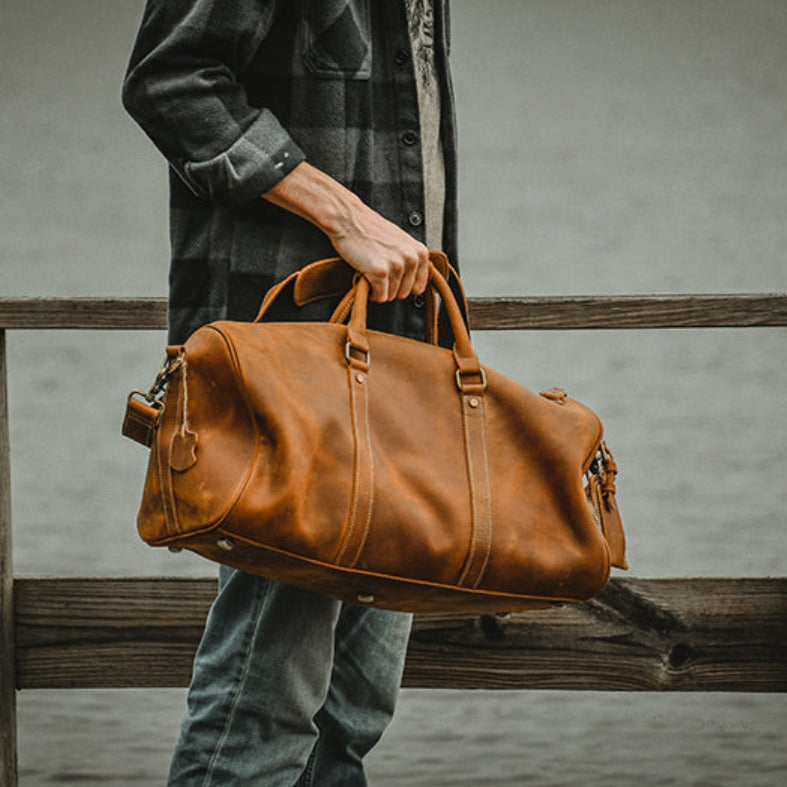
At Steel Horse Leather, we understand the importance of water-resistant leather, especially for travel gear. This understanding led us to create The Dagny Weekender, our premium full-grain leather weekender bag. During its development, we focused extensively on creating a bag that could withstand various weather conditions while maintaining its sophisticated appearance. The multiple interior pockets were specifically designed to keep belongings organized and protected from moisture, while the ultra-soft leather handle was treated with our specialized water-resistant formulation to ensure durability and comfort in any weather condition.
Frequently Asked Questions
How Long Should I Wait Before Conditioning Wet Leather?
When dealing with a wet leather situation, you should condition the leather after wiping off excess moisture with a dry cloth and allowing it to become damp rather than wet. Don't wait until it's completely dry, as this could lead to cracking and potential water damage. Different types of leather, including full-grain leather and vegetable-tanned leather, may require varying drying times. Use a lint-free cloth to gently remove excess water during the drying process, and avoid artificial heat sources like hair dryers.
Will Water Stains On Leather Eventually Disappear?
Water stains and salt stains may not disappear on their own and could become permanent damage if not treated properly. Prompt action with a high-quality leather conditioner is essential to prevent lasting marks. For an item with water stains, use a clean cloth and work in a circular motion to apply the leather cream. Creating a protective barrier with a waterproofing spray can help prevent future water damage to leather items.
Can I Use Regular Moisturizer Instead Of Leather Conditioner?
No, regular moisturizers aren't suitable for leather products. Always use a special leather conditioner as they're formulated with the right ingredients to nourish and protect the natural grain of leather properly. Whether you're treating smooth leather, nubuck leather, or chrome-tanned leather, using the appropriate leather cleaners is crucial for maintaining the leather's supple quality and natural finish.
How Often Should I Apply Water-Resistant Treatment?
The frequency depends on usage and exposure to water, but generally, applying a water-repellent spray every 3-6 months is recommended for regularly used items. This applies to leather shoes, leather bags, and leather jackets that face frequent contact with water. For optimal water resistance, ensure the entire surface is treated with a stain repellent to create a waterproof barrier against moisture.
What Should I Do If My Leather Item Gets Soaked In Rain?
If your favorite leather item experiences prolonged exposure to water, remove contents immediately, stuff with absorbent material like crumpled newspaper to maintain the original shape, wipe gently with a microfiber cloth, and allow to air dry naturally in a well-ventilated area at room temperature. Avoid direct heat sources during the drying process. Once the leather is just damp, apply a coat of leather conditioner to restore its natural water resistance and prevent irreversible damage to the leather fibers.
Conclusion
Protecting your leather items from water damage requires both preventive measures and proper response techniques. By understanding your leather type and following the recommended care procedures, you can significantly extend the life of your leather goods. Remember that immediate action and proper care are key to preventing permanent damage, and investing in quality leather care products is essential for maintaining your leather items' appearance and durability.
























